For like the first time in forever, I came to the UK this trip with no set plans for any down time. Usually, I have stuff booked, know where I’m going and what I want to see. I had vague ideas that if the weather was good, we might venture to Iceland or the Faroe Islands to go aurora hunting, but the weather was absolutely shite and unpredictable, and both those trips were going to be costly if we couldn’t actually get any viability, so we went hunting for a side trip that was going to be affordable and wouldn’t matter if the weather remained shit. After a bit of discussion, we decided, a long weekend in Dublin could be just the ticket.
We didn’t book an early morning departure – but I forgot how dark it is here until like 9am. Milton Keynes at 7am in February… looks eerily like something out of a Harry Potter description.
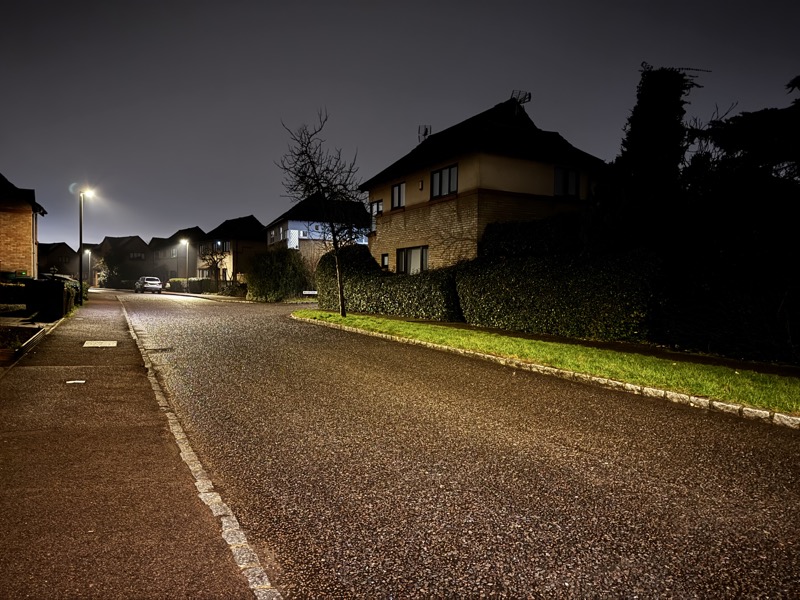
Cold and damp as we set off. There was so much moisture in the air… the car park lights in the long stay car park had enormous halos. Was very glad for the lighting though – walking around here in the dark without any sense of direction would be rather creepy.
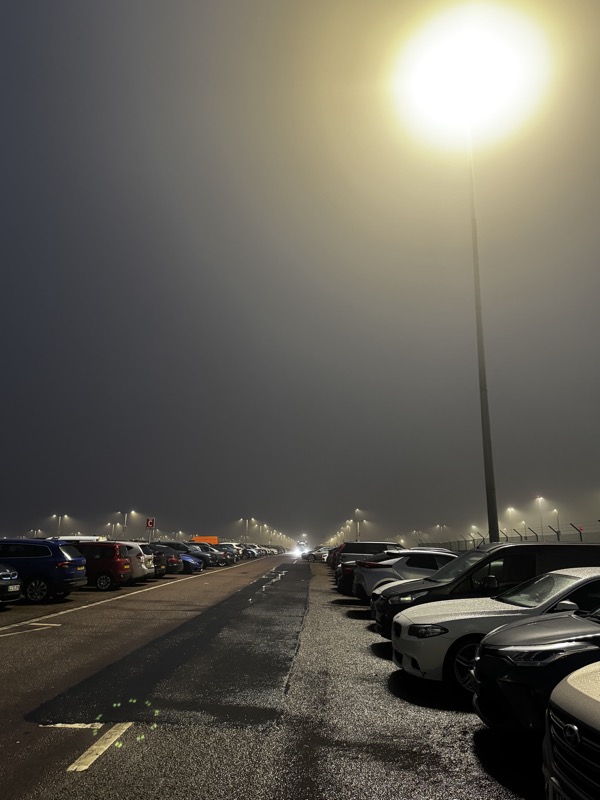
Today, I embarked on a first – my first ever RyanAir flight. Which might seem a bit odd for me given how far and wide I have travelled over the years, but I’m a One World Girlie, and don’t usually bother looking too far outside the network. But given this was a really short trip (it always does my head in how easily, cheaply and quickly you can get to a whole different country when you’re in Europe… I mean, this flight was shorter than Brisbane to Sydney), we figured – how bad can it be?
Some observations about Luton – I don’t know what people are complaining about. It’s smaller, well laid out and easier to navigate than Heathrow. It’s got all the same food and shopping options of other airports this size and the taxes to fly in and out of Luton are less, so what’s not to like? Maybe the public transport options are dodgy? Not sure, we didn’t look into it. But I’d happily fly in and out of Luton over Heathrow and it’s grimey London ick any day.
Ryanair was a bit of an experience… somehow managed to feel even more like a bus service than even your average American domestic airline does. Perhaps due to all the bright yellow and blue livery – very bus and road transport type colours, (airlines tend to favour soothing over dynamic colour schemes). Or perhaps it was being ushered into a waiting pen and the literal standing around waiting for the doors to open, so everyone could rush the plane to take their (assigned) seats, or the jostling for overhead space or the utter lack of service once on board, or I dunno? It just felt like a bus line. Obviously they’re a famously budget airline, but having mostly flown Qantas, Emirates, Air Swiss, Cathay Pacific, Singapore Airlines, Air Canada and even JAL over the last decade (I can’t remember the last time I was stupid enough to book a Jetstar flight), I haven’t got much to compare it with anymore. I found the air safety card on the seat backs to be somewhat amusing… practical I’m sure, but amusing.
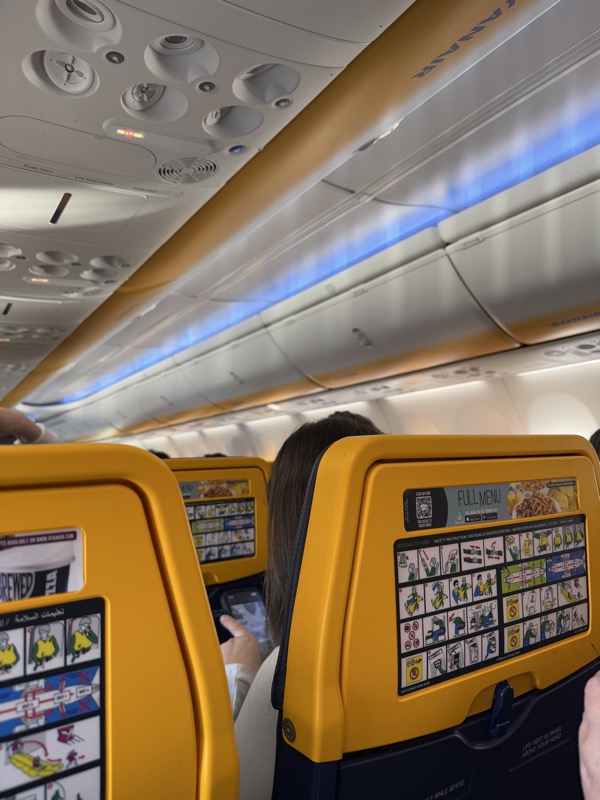
Anyway, it wasn’t long before we landed in Dublin, went through the most cursory of immigration processes, took a shuttle to our hotel, dropped off our weekend bags and head for a pub! Because Ireland! Neither of us are Guinness or beer drinkers so I predict quite a bit of cider will be imbibed over this weekend adventure.
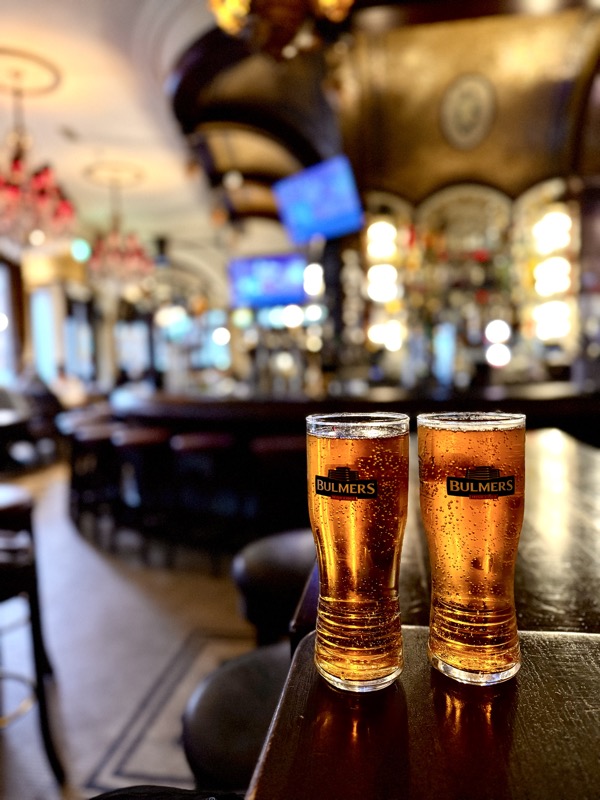
Like most visitors to Dublin, we chose to stay right in the Temple Bar area – because that’s where all the pubs and good vibes are to be found. We knew this could end up noise revelry and possibly disturbed sleep, but that’s okay! When in Ireland and all that. Not far from our Hotel, we found the famous Love Lane, which kinda marks the centre of the town’s creative and arts district. It’s a bit of a hub for handsome graffiti and small galleries. Very quaint.
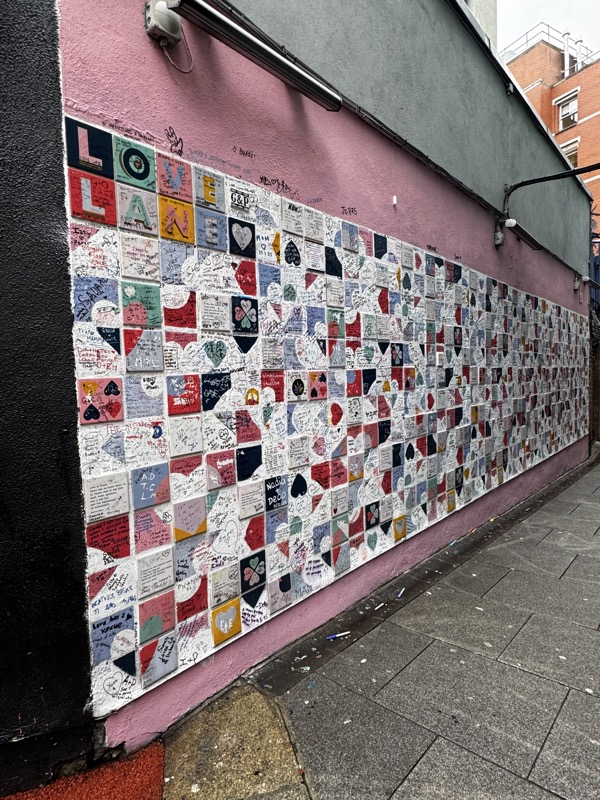
They must paint over the tiles on the Love Wall semi-regularly, as there are markers around inviting people to leave their marks on the wall.
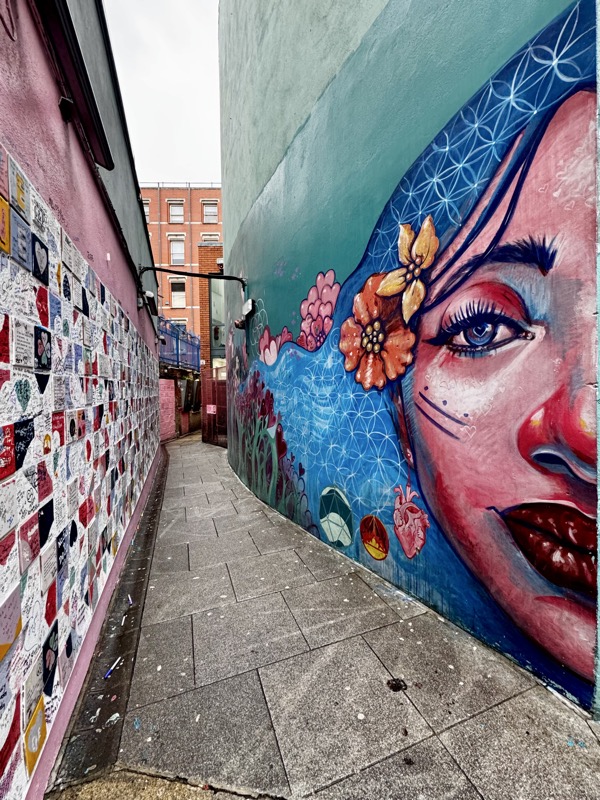
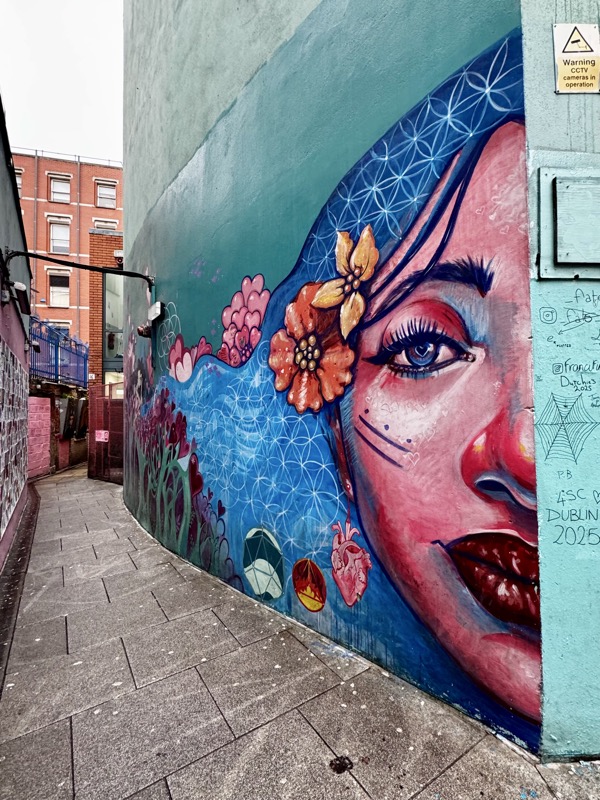
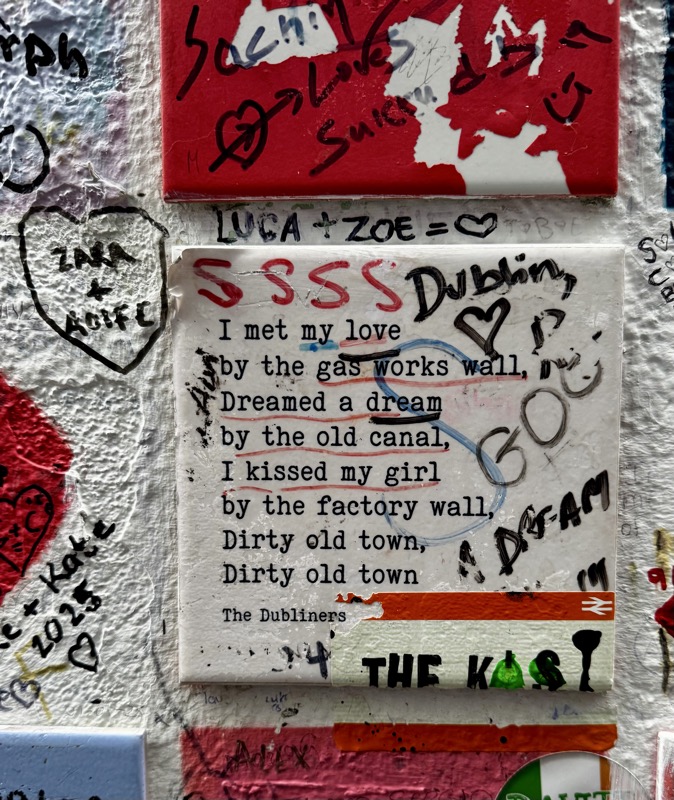
I did not leave my inane musings in the wall, but delighted in reading some of the more thoughtful and poetic entries left by others.

We had a bit of a moist meander around the Quays, it was here I discovered my new knee doesn’t really like the cold 
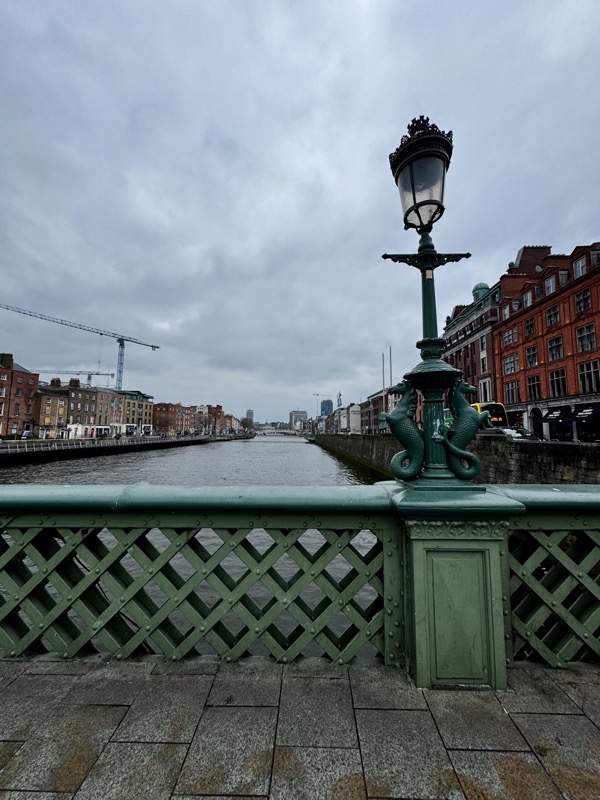
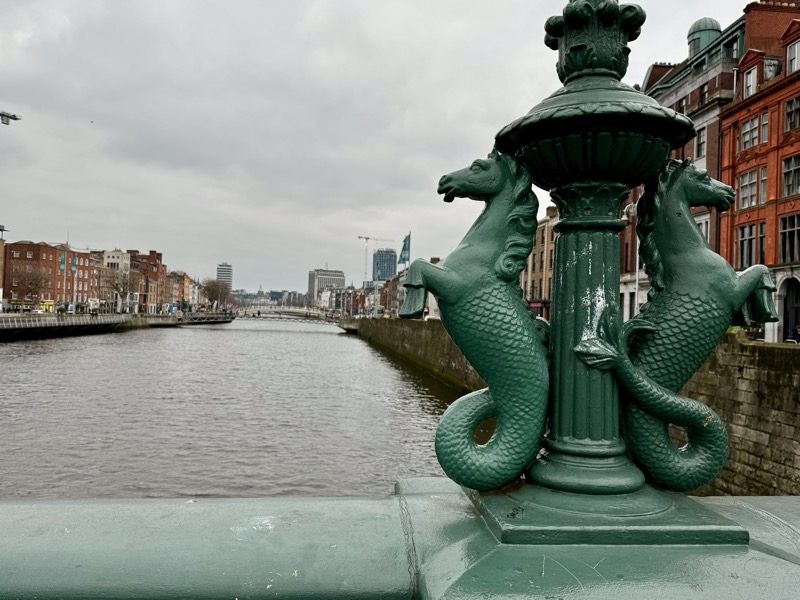
A timber riverside boardwalk … every single rivet/bolt head was covered with a bottle cap. People were sleeping on the benches here, Dublin has a right problem with rough sleeping, I can’t imagine sleeping out in this weather.
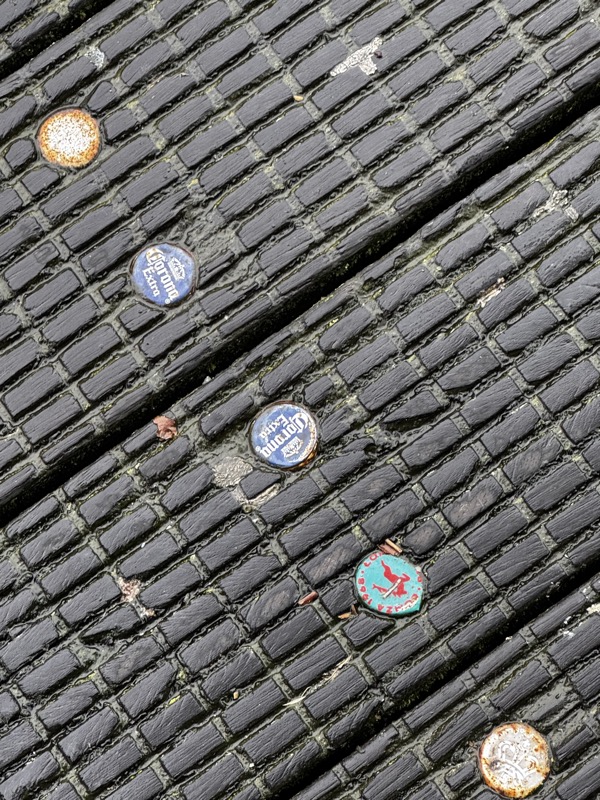
The “Meeting Place” statue was apparently designed to reflect every day life, quite unlike other statuary in the city which is designed to aggrandise important people/events. As is typical of any city, they’re commonly referred to by something less savoury than the artists and town planners initially intended and are affectionately known as the “Hags with the Bags” or the “Slags with the Bags”. Interestingly, that tidbit was left off the QR code info that could be scanned beside them. 
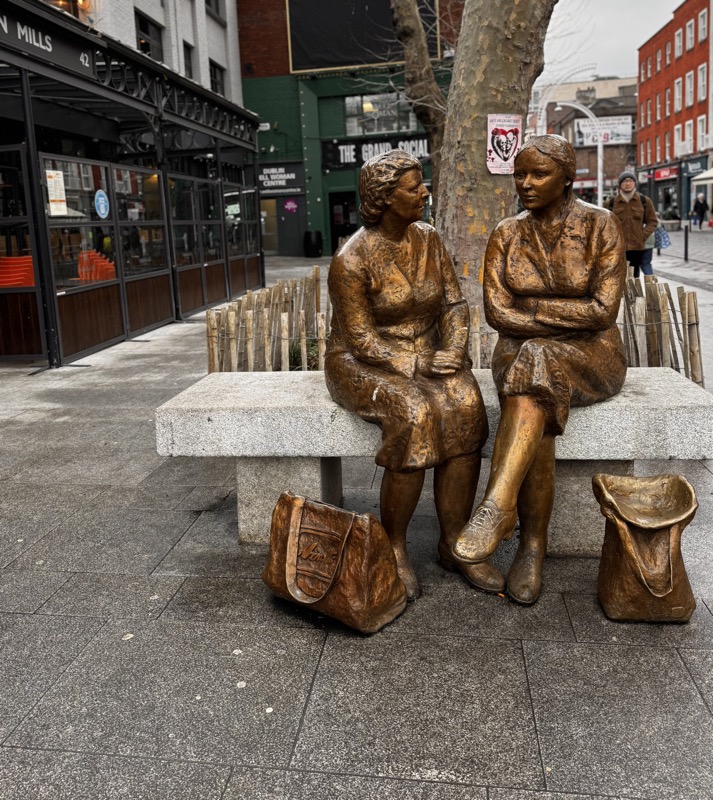
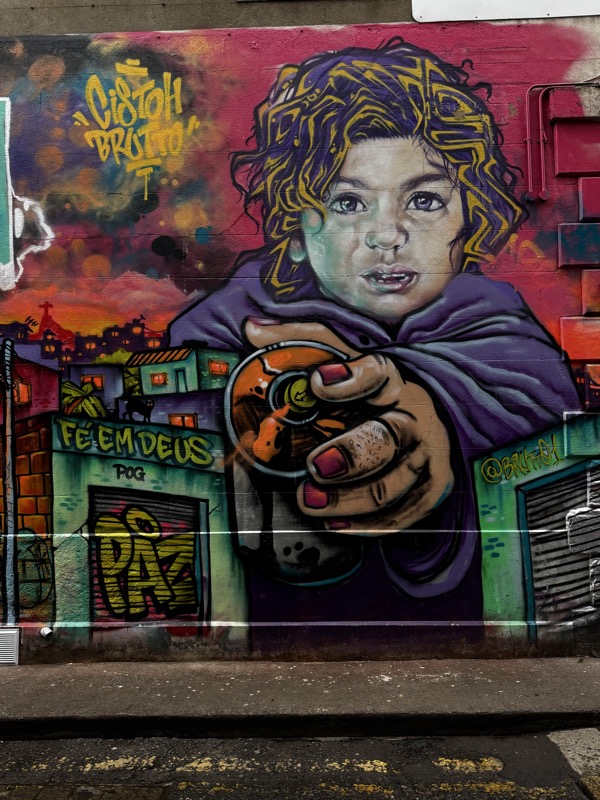
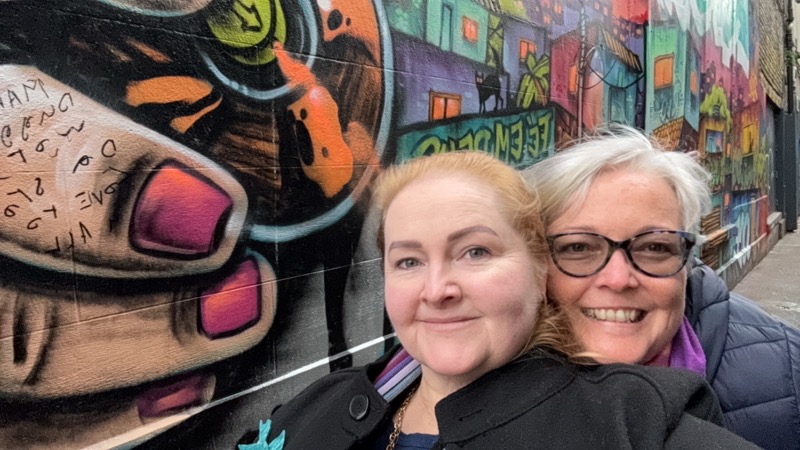
More ciders and some warming seafood chowder for lunch at The Lotts… best damn seafood chowder I’ve had since 2009 at a tiny little cafe I can’t remember the name of near the Moeraki Boulders in South Island of New Zealand – in truth, both memories may be impacted by extremely cold conditions and a general sense of wellbeing at finally coming in from the cold and wet. 
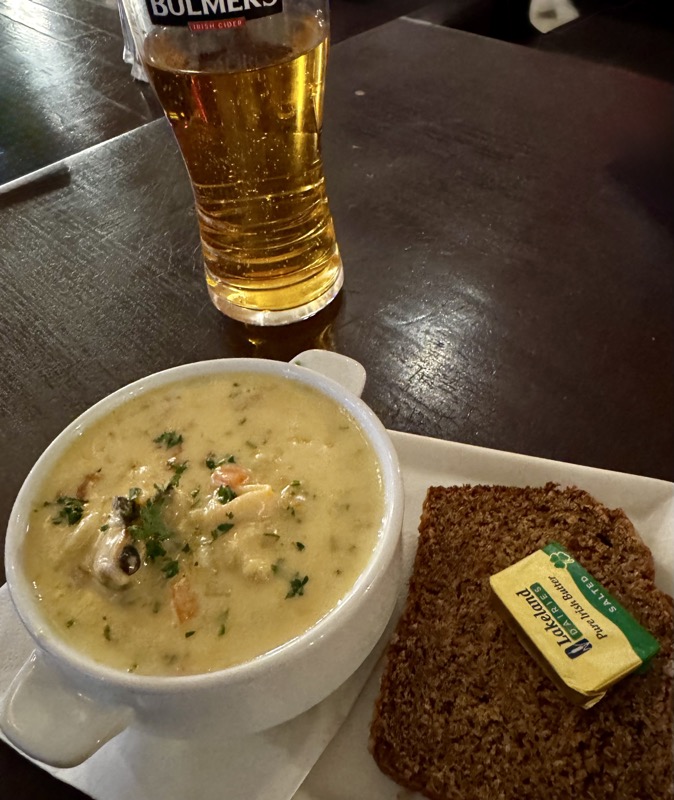
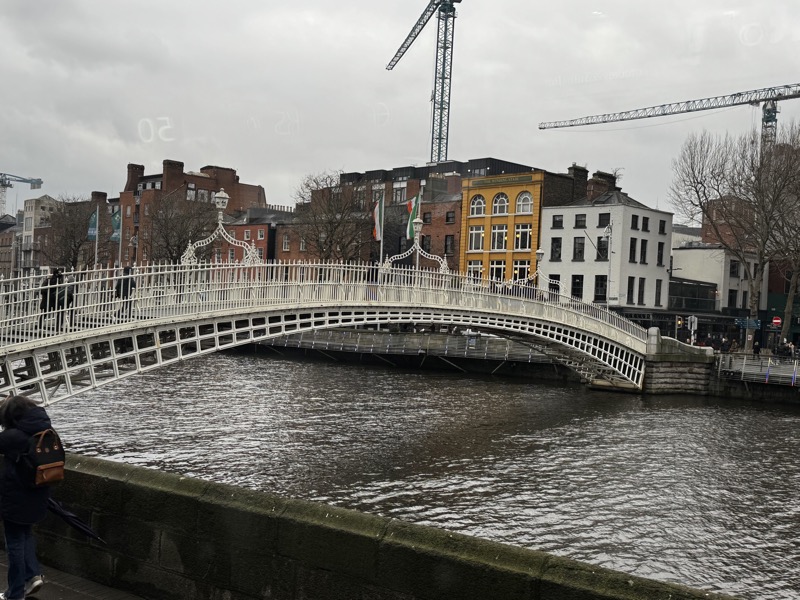
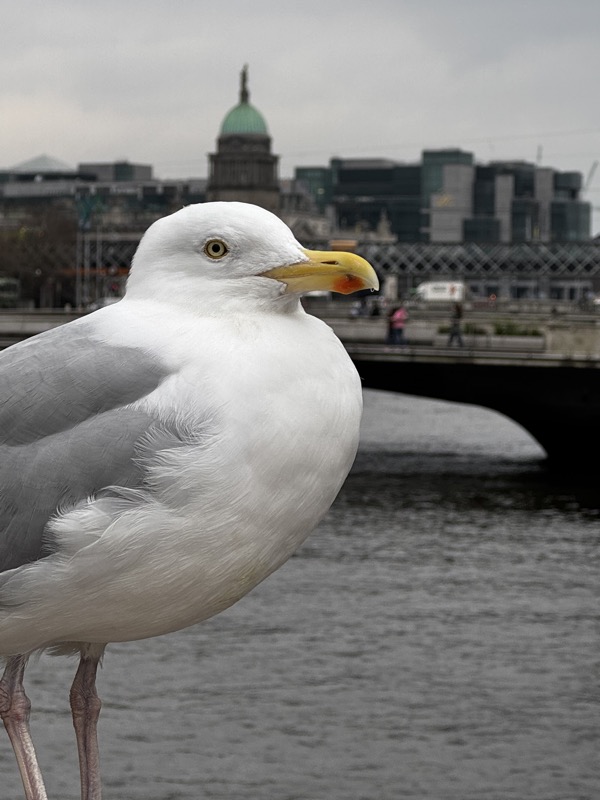
The Palace Bar is a bit of an institution in Dublin, having been established a little over 200 years ago and being one of the few remaining Victorian snugs in town. It reminded me very much of the Princess Louise gin palace in Holborn.
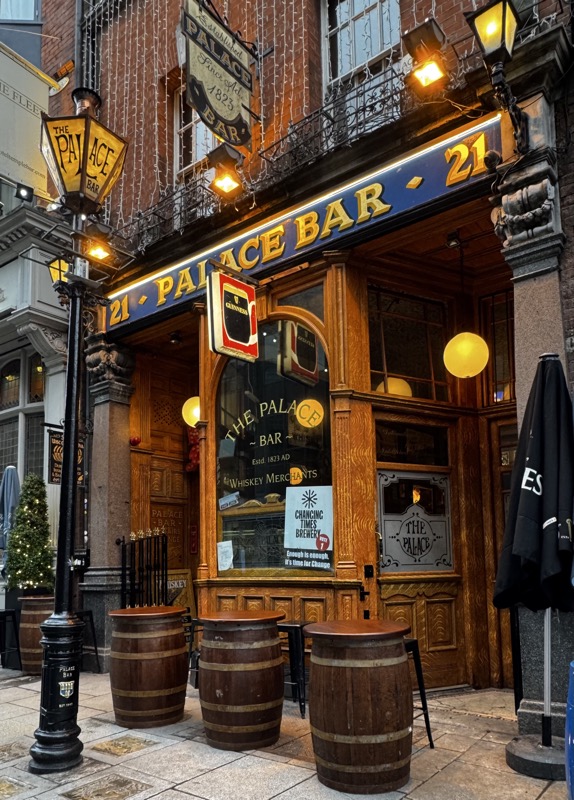
The pressed tin ceiling, the warm timber bar and seating spaces divided into little quiet nooks … if those walls could talk, I’m sure they have tales of politics, poetry, scandal and revolution! The Palace Bar feels like quite the step back in time.
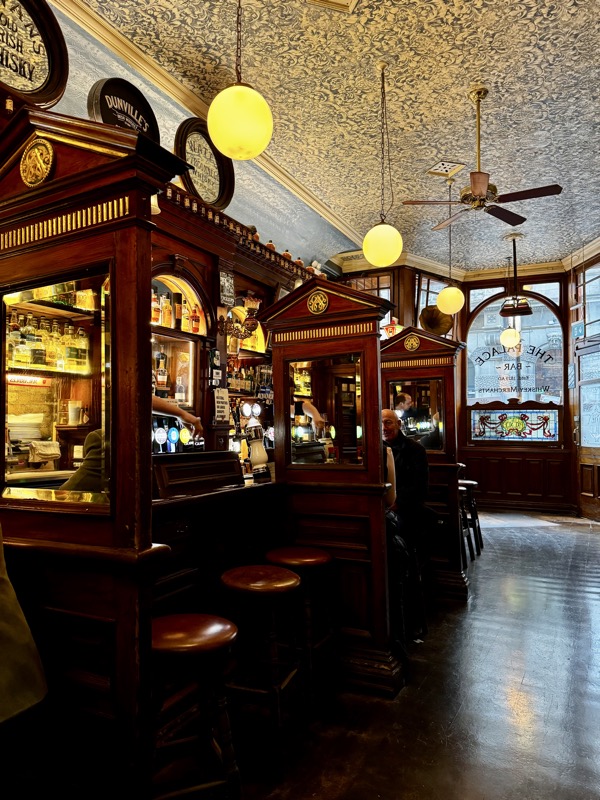
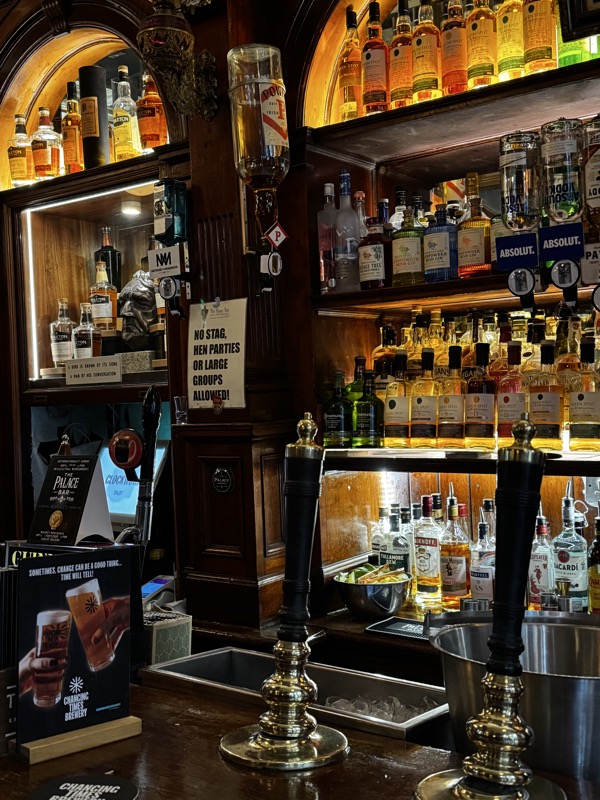
The main bar area, which I have to say isn’t much bigger than my living room (and in fact may even be smaller), had this amazing stained glass roof. It was a very pleasant looking pub, but after the vibrant upbeat atmosphere of Lotts, this place felt a bit staid and stuffy – everyone was sitting way too close to each other and having stifled conversations, I feel it needed a bit of music to liven the place up.
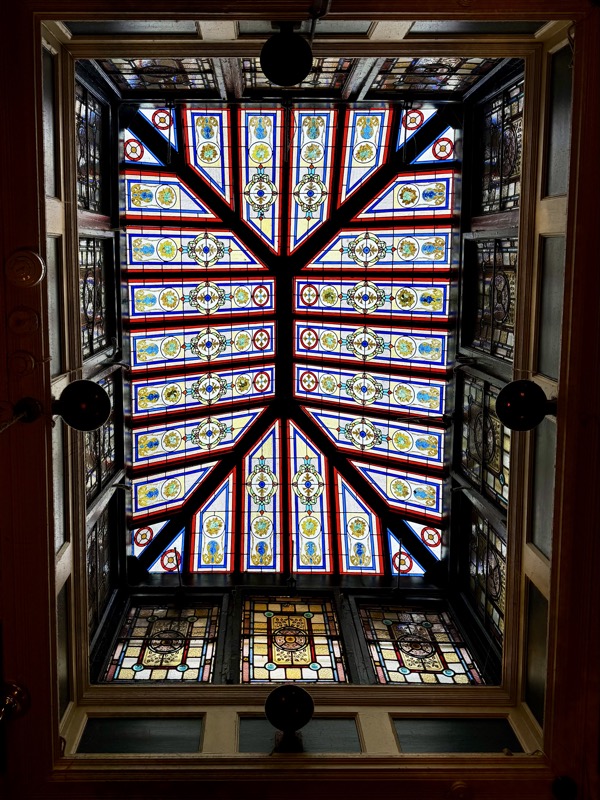
Temple Bar Square – which is you know, rectangular.
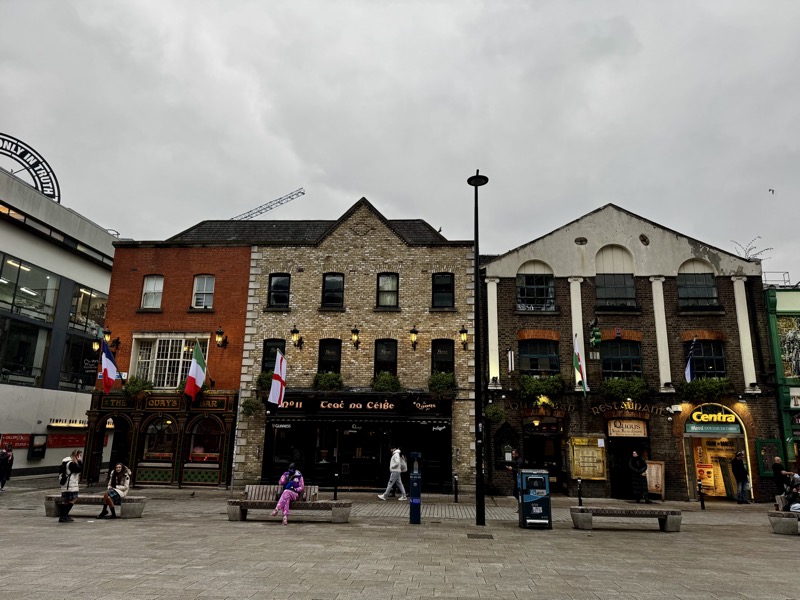
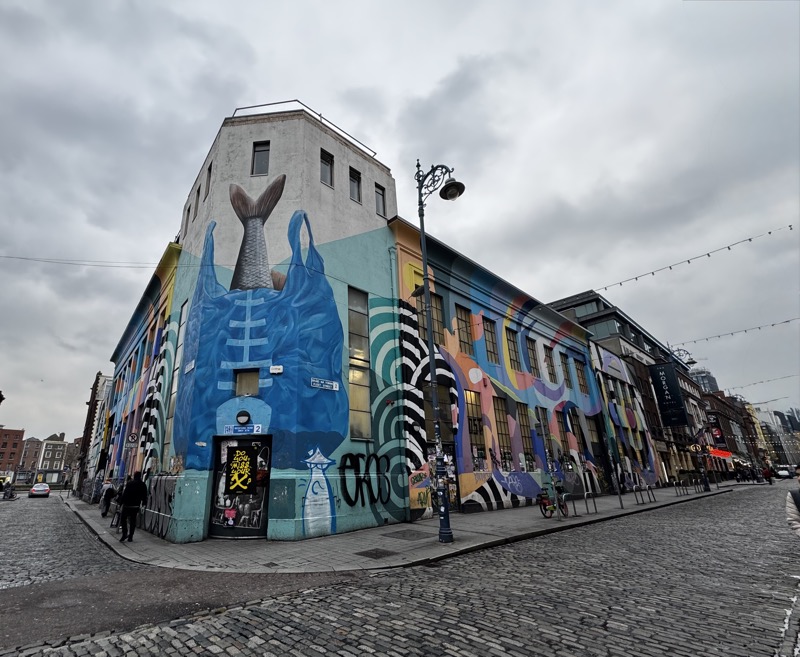
The famous Temple Bar… all of 2pm, and lit up like a Christmas tree.
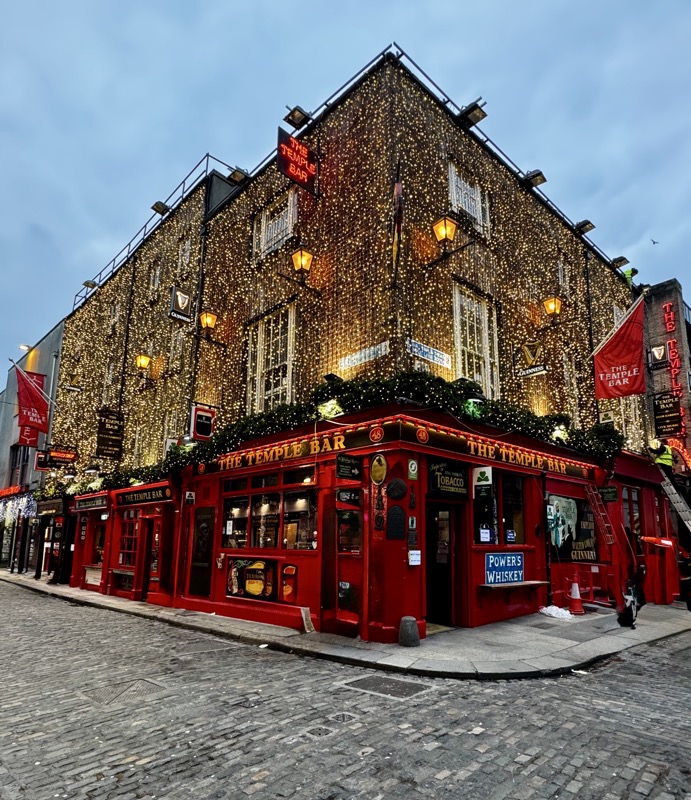
Before too long, we were a bit tired of pub hopping and went in hunt of some dinner. The Seafood Cafe was just down the road from our hotel (The Dublin Citi Hotel), and promised fresh oysters – and who can say ‘no’ to that!? I quite liked their style on this front – they offered a bunch of different types of oysters on the one platter, and if you weren’t a big oyster fan, you’d probably say they all taste the same… but if you’re an oyster snob like me, you’ll find each of these varieties had differing amounts of saltiness, mineral ‘tang’ and varying levels of creamy texture. The Doriel Creek were my favourite – possibly because they are most like the huge Tasmanian Pacific oysters, I like to buy at home.
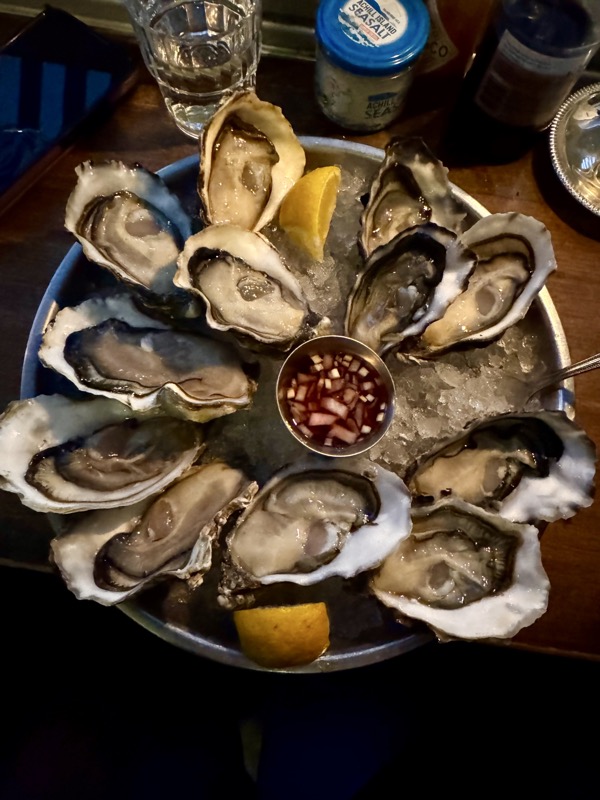
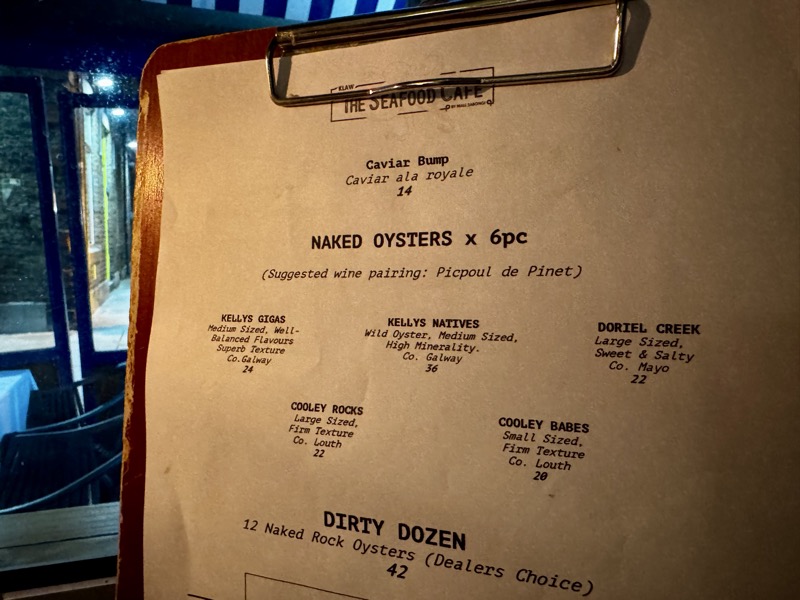
Next day we were off to Trinity University to hunt down the Book of Kells and see the Long Hall Library. I was here back in 1995, and remember the visit quite fondly… moving quietly through the dark rooms looking at the pages of the this Millenia old book created by monks shivering in their monastery; it’s about as romantically medieval as it gets!
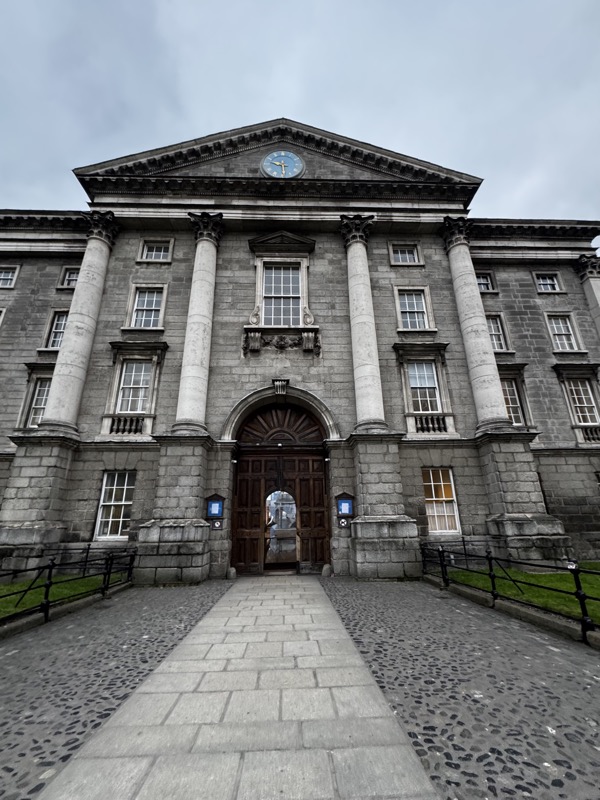
Interestingly the curation of the Book of Kells exhibit started with an series of panels describing and explaining Ogham (writing system c.5thC AD) – which struck me as odd, given the Book of Kells is famous for its illuminated manuscript, and from memory doesn’t have any obvious Ogham text in it? The panels provided some context; Ogham was predominantly used to inscribe stones, much in the same way runes were used by the Norse cultures, and these stones were used as boundary and directional markers. There has been some Ogham discovered in the marginalia of the Book of Kells (which was created in the 9thC AD!), and that apparently is the connection here.
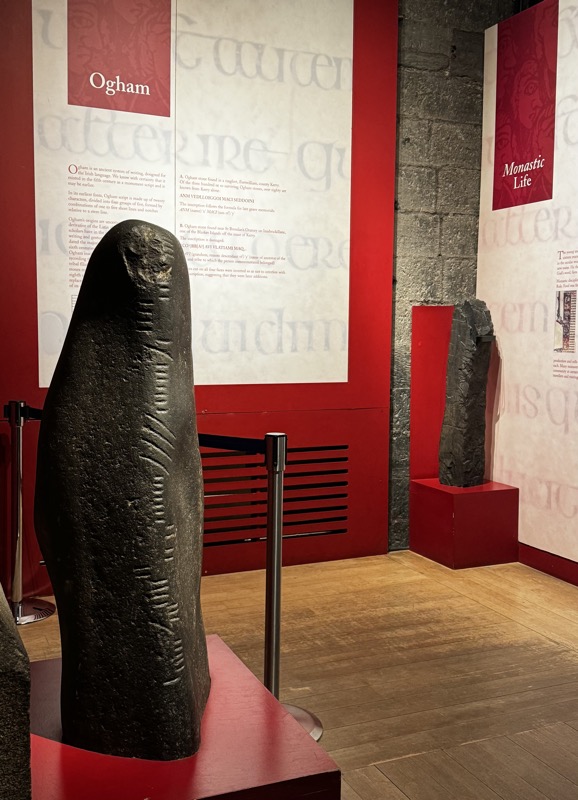
I knew we weren’t going to be able to take any photos of the actual pages of the book, so took advantage of some of the high definitely pictures throughout the display to capture some of the intricate details from the artworks.
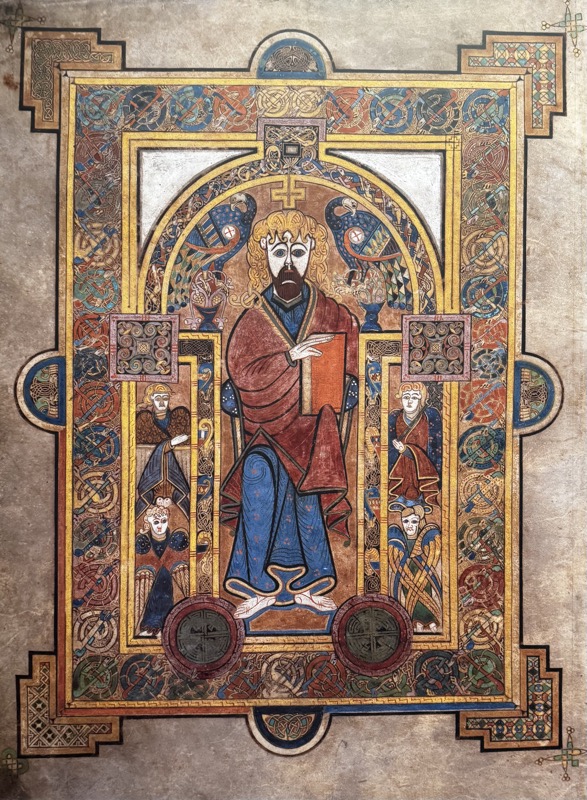
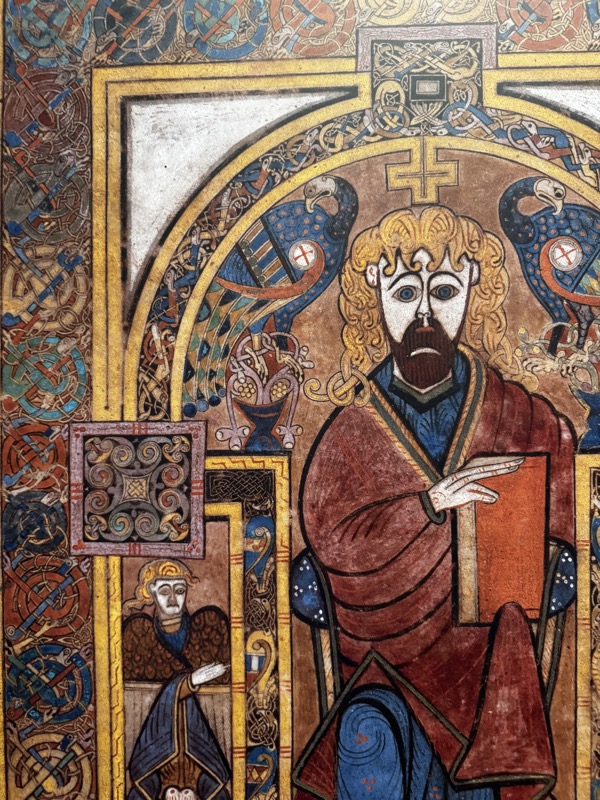
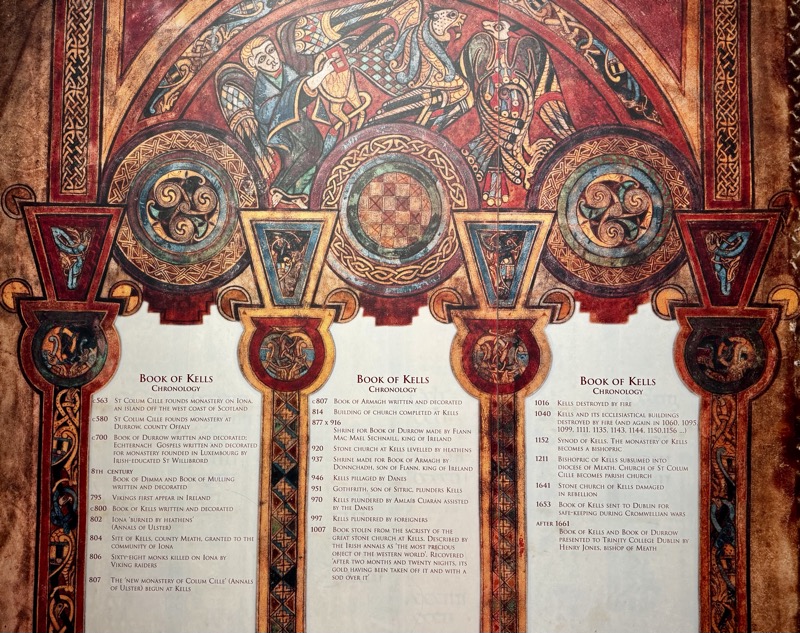
There was an excellent display on the medieval pigments used to create the illuminations:
MEDIEVAL INKS AND PIGMENTS:
Extracted from a wide range of sources, these include powdered particles from clays and minerals; dyes extracted from lichens, barks, berries, and insects; and pigments produced through chemical reactions.
BLACK:
1: Iron gall ink: This is created by the reaction of iron salts with the gallo-tannic acid extracted from plant galls. This is the principal ink on the Book of Kells.
2: Lamp black: A fine particle carbon deposit created from burning oils, rosin, or pitch. Carbon black ink
was found in script and design on the Book of Kells.
3: Bistre: A carbon black produced from wood soot and Char-blacks were also commonly made from fruit stones and vines.
4: Acacia gum: Inks and pigments are bound to their support by sticky substances such as gums and glues. Gum Arabic is the hardened sap of the acacia tree.
WHITE:
1: Gypsum: A calcium sulphate mineral common in Ireland. This is the white on the Book of Kells.
2: Lead white: This is a basic lead carbonate, produced by exposing lead to acidic vapours, heat, moisture and fermenting matter. It is a toxic pigment with a tendency to darken.
1: Indigoindigotin dye: Extracted from the woad plant ‘Isatis tinctoria’. This is the blue on the Book of Kells. It was mixed with gypsum to create lighter tones.
2: Azurite: A hydrated copper carbonate mineral. This is common in manuscripts from the later medieval period.
3: Lazurite: This aluminosilicate sulphate comes from the mineral lapis lazuli. Exceptional quality is required for a bright blue, which makes it a costly pigment.
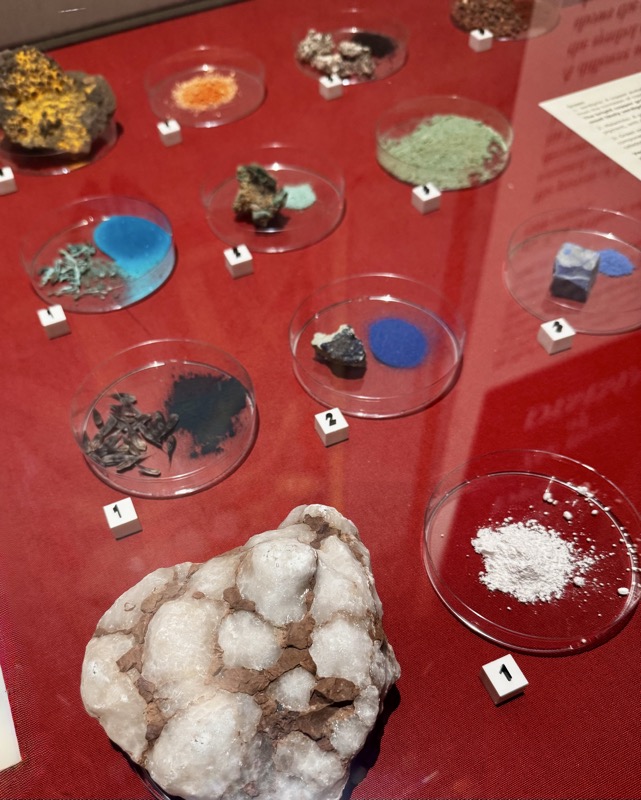
The illuminated alphabet:
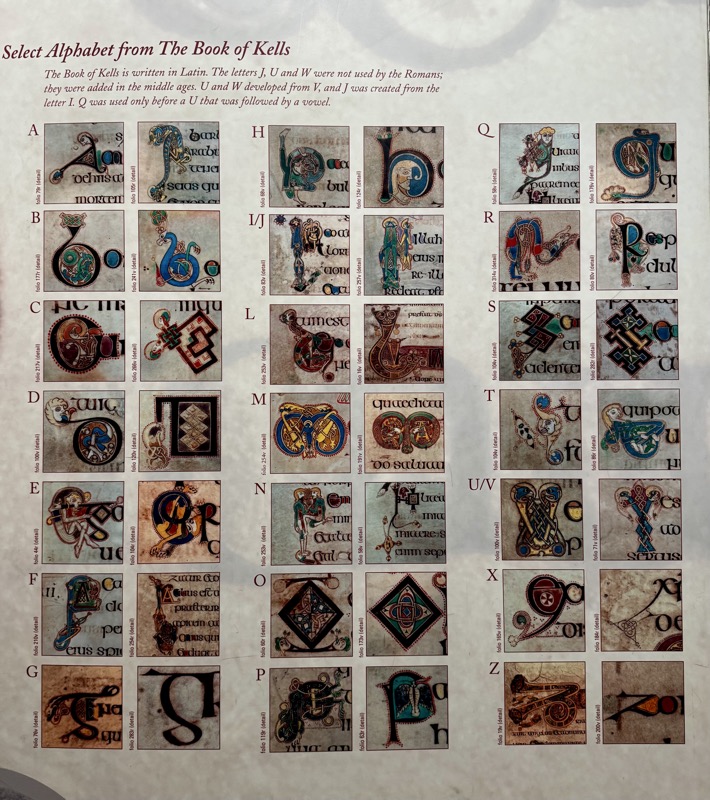
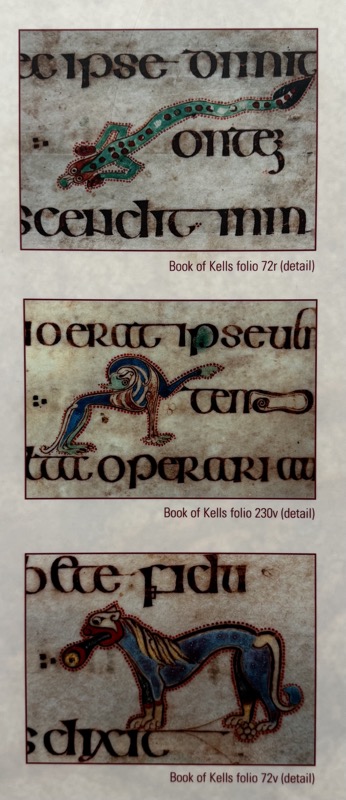
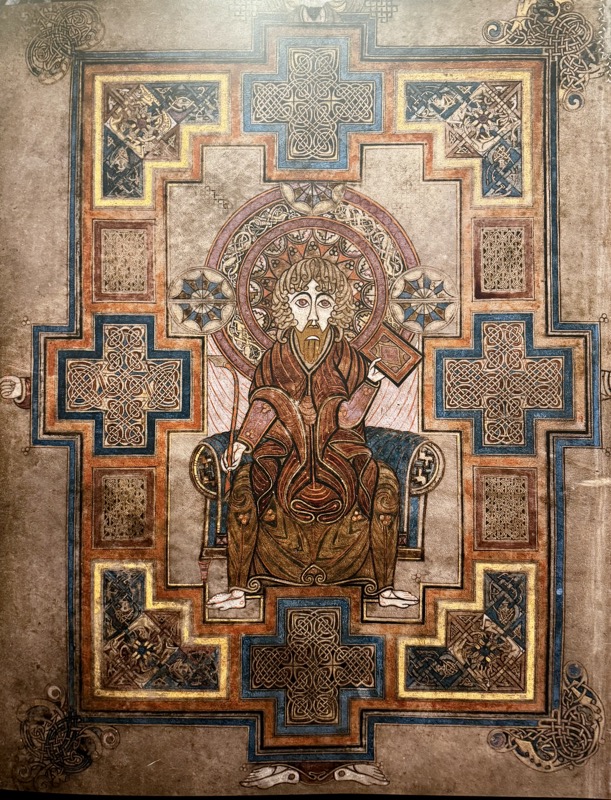
Then, after reading all the informational plaques and panels, we are able to enter the room where the book is held… and disappointment ensues. A replica of the book is in a darkened room, opened up with two sacrificial pages from the original tome are on view. Just two pages, and neither of them containing an illumination – just two pages of text. Seriously, nothing special about these two pages at all. I understand wanting to preserve and protect the book, but charging us €25 to come in and see a whole lot of not much is a bit rude.
Thankfully the Long Room library didn’t disappoint – even with over half of the collection of books removed, it is still a stunning place to visit. I somehow managed to initially walk in and be the only person in the entire library for about 5 minutes. Five minutes which felt like an eternity as I stood there and smelled the old books and my eyes adjusted to the dim light. What an incredible building, full of so much knowledge and history. Wikipedia and Google might be able to give you answers to everything your weird and wired little brain can think of, but the feelings and sensations of being in a place like this – they can’t give you that.
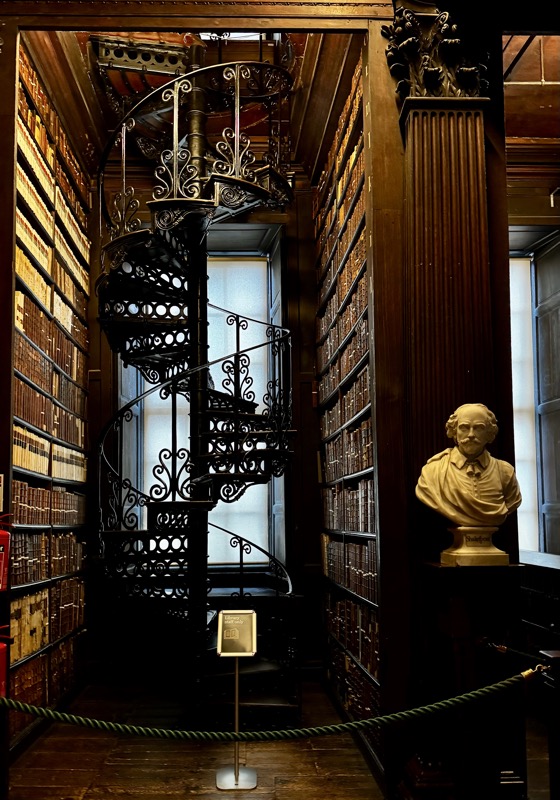
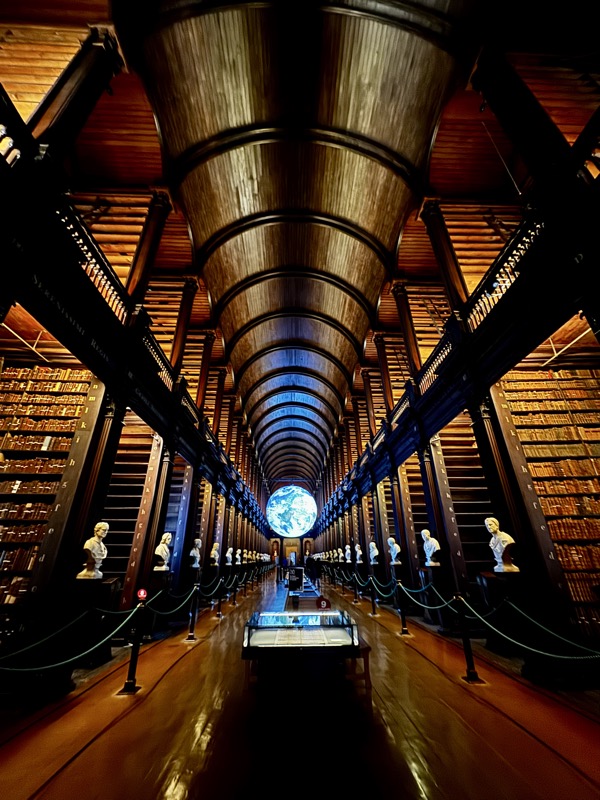
The silence was incredible, you could hear a pin drop. No people nearby, no school groups or loud American tourists… it was blissful to have a special place like this to myself; even if only for a few minutes.
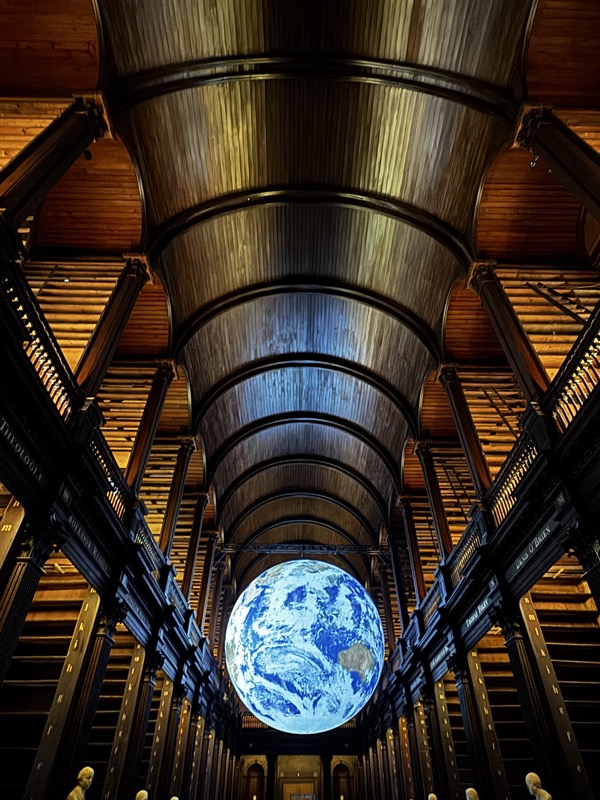
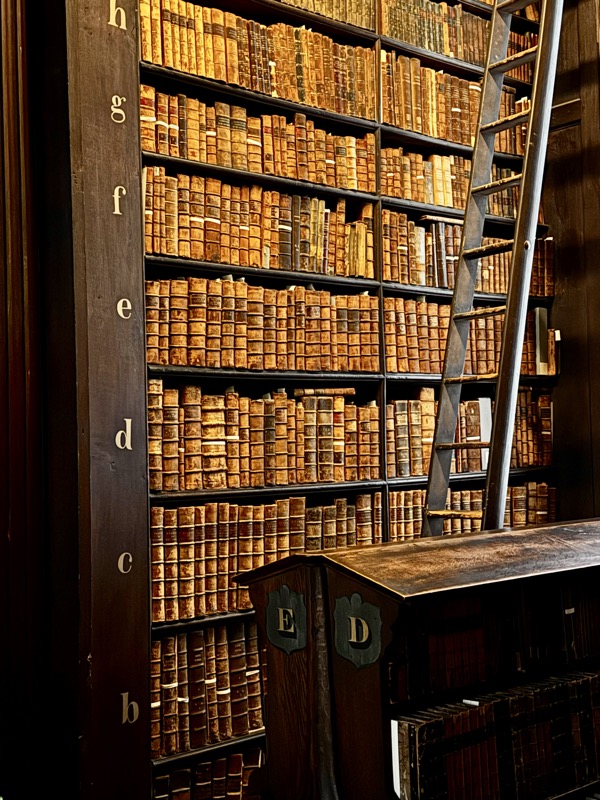
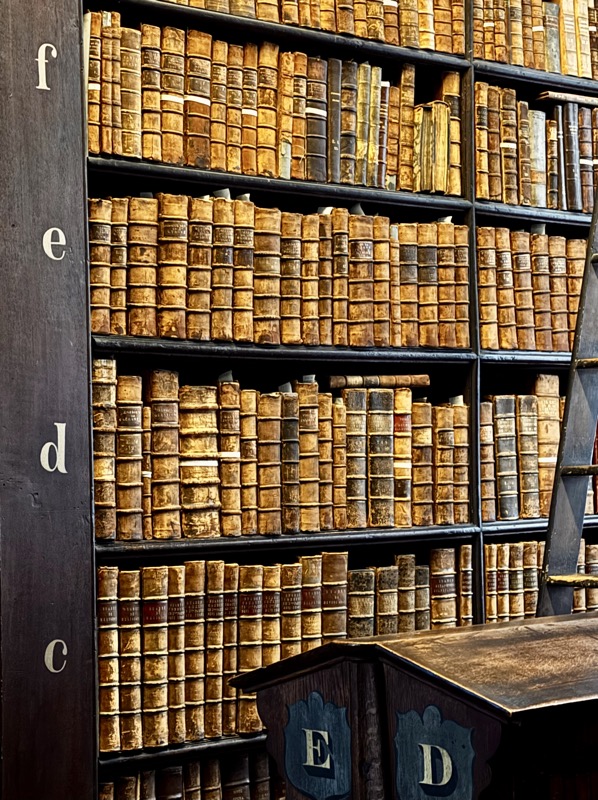
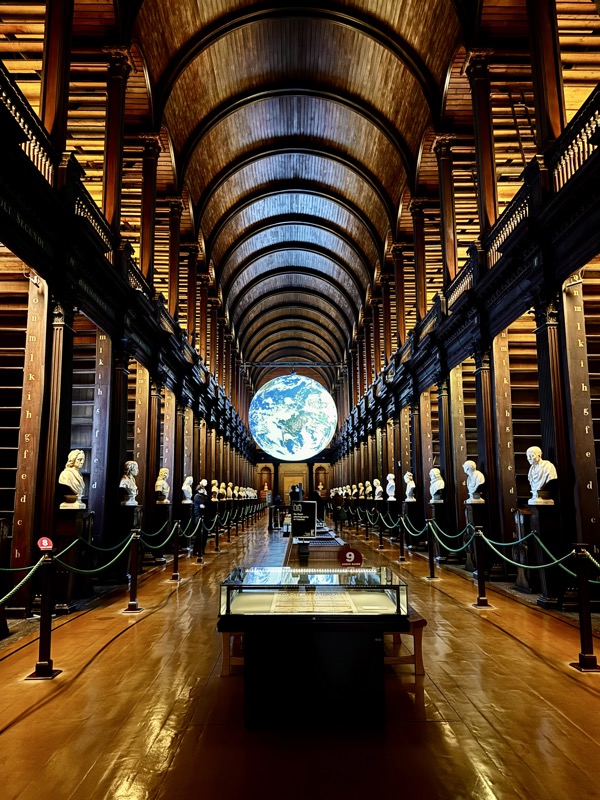
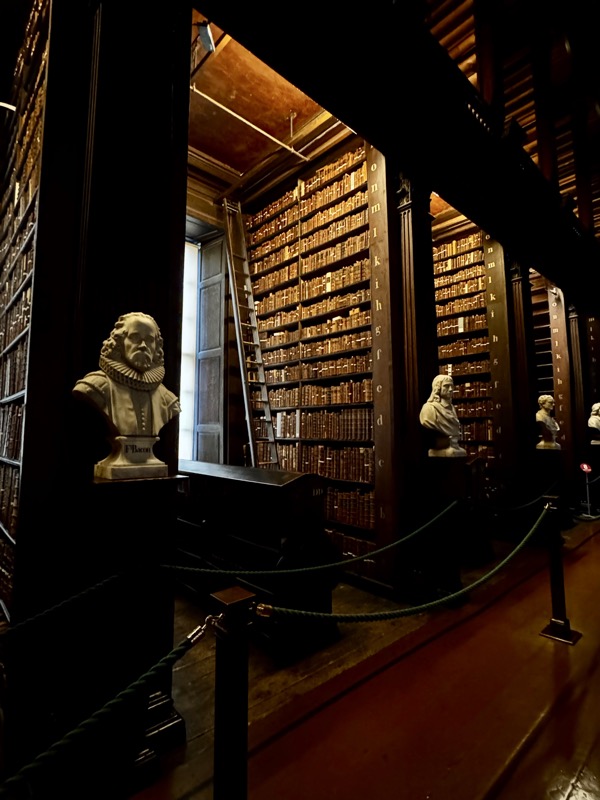
I found a quiet seat and just absorbed my surroundings, craning my neck to see the famous ceilings. Just… wow. Fleeting moments like this are what makes the nightmarish transits and cramped budget flights all worth it.
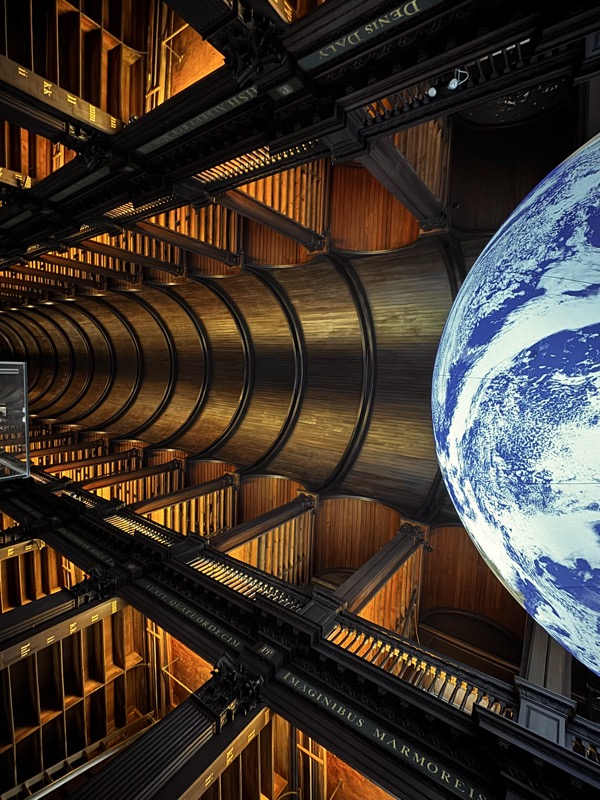
Oddly, there is no ‘exit through the gift shop’ happening here… and if you are interested in books on the Book of Kells or other things associated with Trinity College or Irish history, you are directed to these ‘big red boxes’ which contain the Book of Kells Experience. If you’re immediately thinking, “Spirit of London”, you’d be correct.
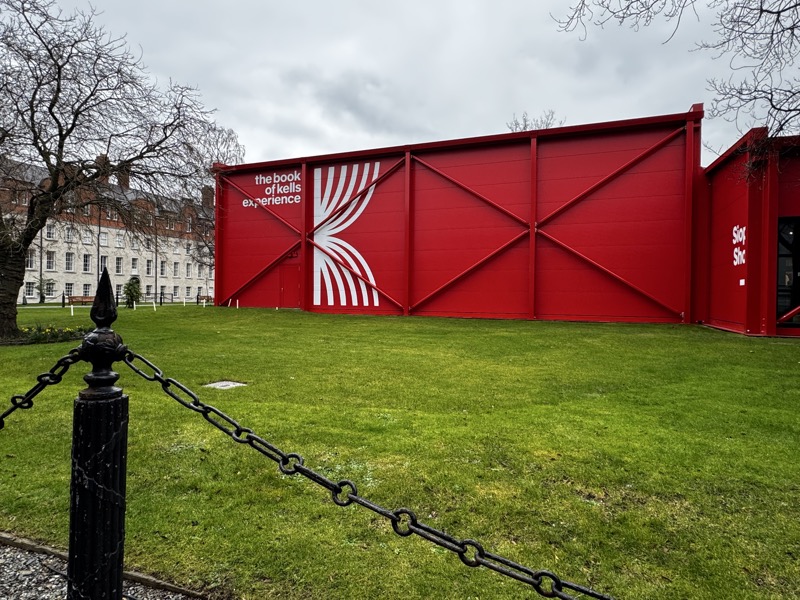
Inside is an audio visual tour of the book, with very little history about who, when and where it was created, but plenty of enlarged projected imagery from the book being whizzed around the room and towards you to a medjieval Irish soundtrack… and then the obligatory gift shop exit! Admittedly, it was full of what appeared to be good quality products and souvenirs to take home from your visit, but none of it was thrilling enough that I wanted it cluttering up my house indefinitely.
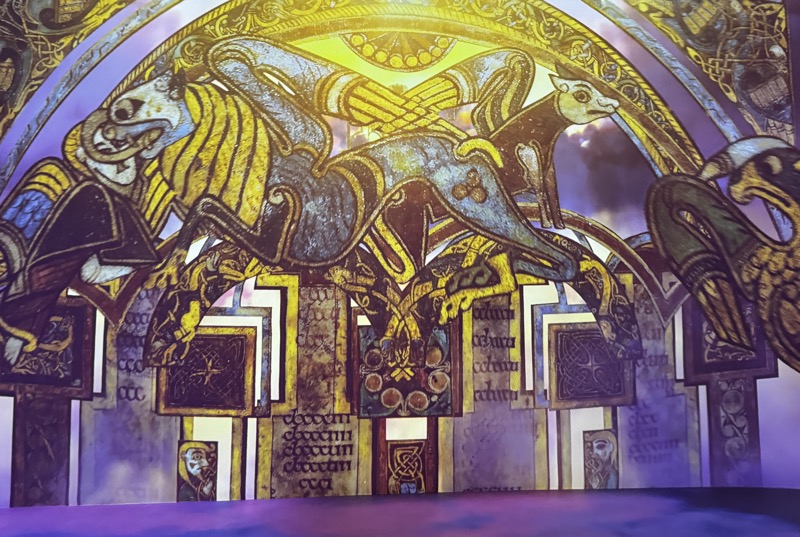
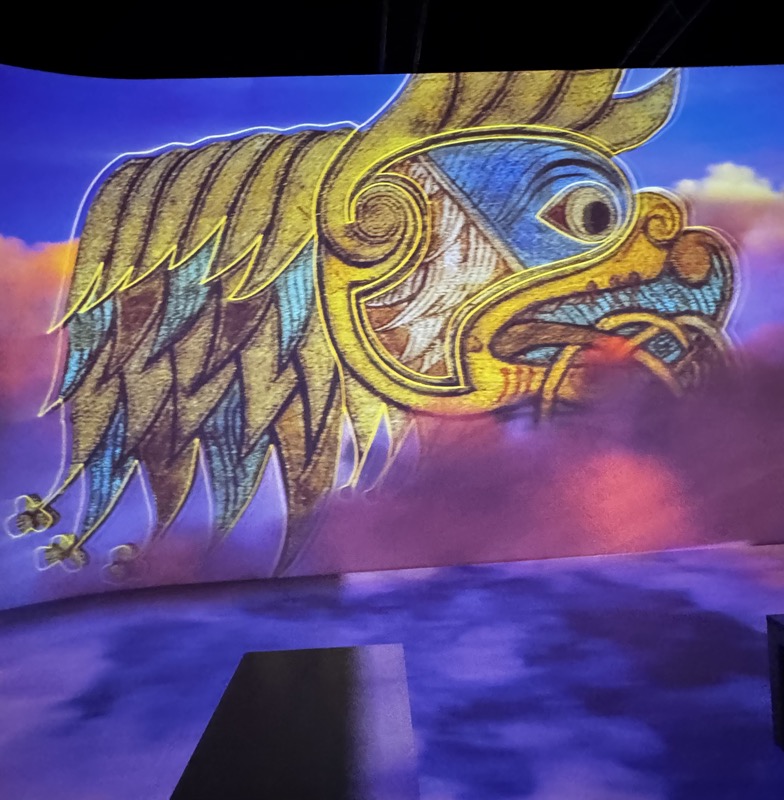
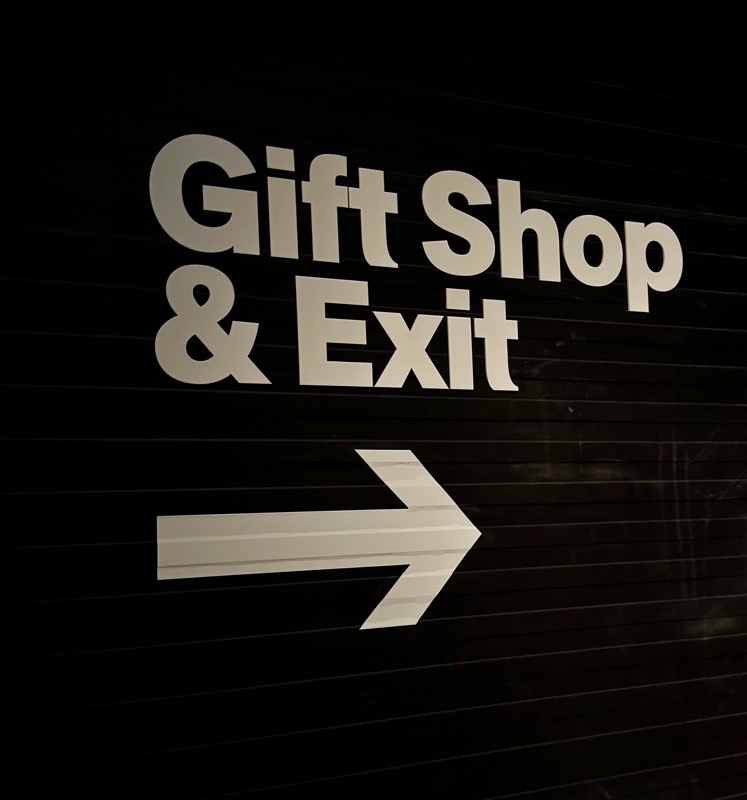
Directly across the road from the entrance to Trinity College was the Irish Whiskey Museum… and that sounded like a decent place to get out of the cold for a bit longer before lunchtime. 
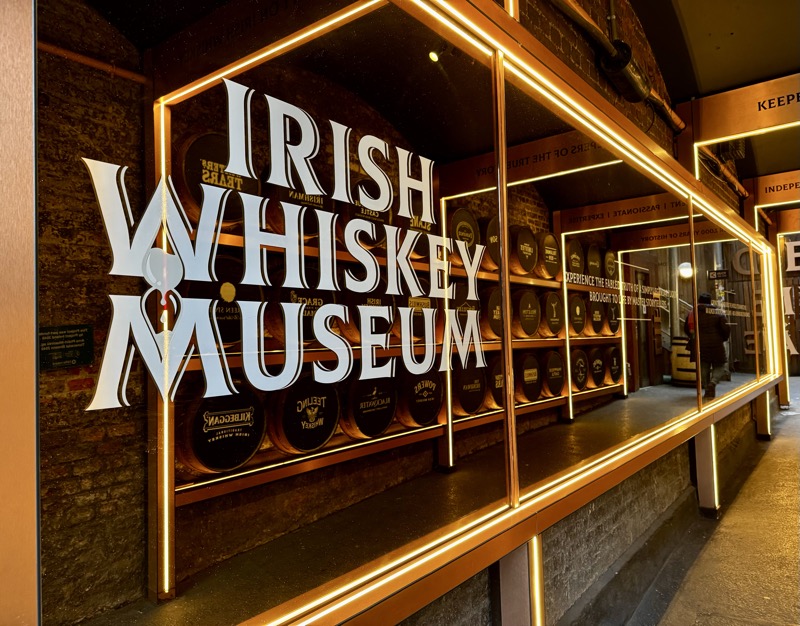
The museum is located in an old building, but a brand new complex and promised to teach us all about the history of Irish whiskey… and it did, complete with a young tour guide leading us from room to room, reciting a well-worn spiel about how the Irish were making their moonshine since way back when and how lots of it literally led to blindness and death before they figured out how to make it safely.
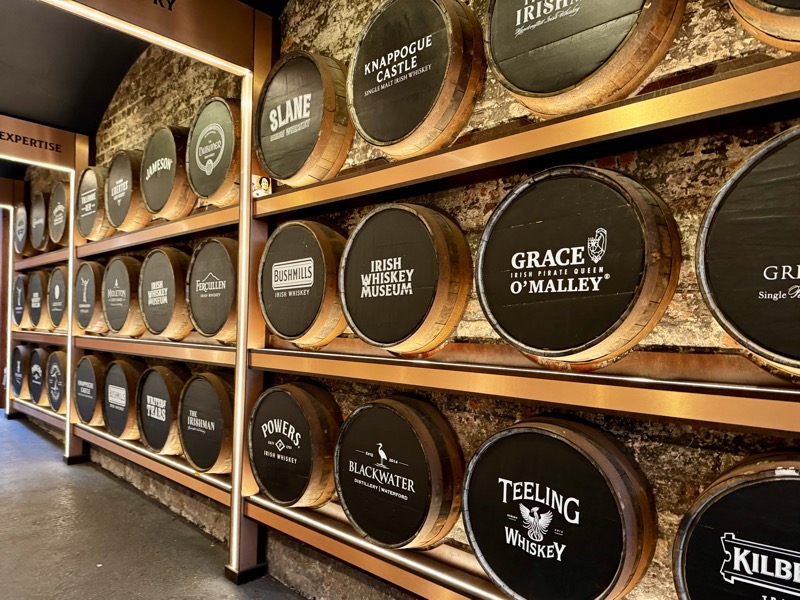
In the early 19thC the whiskey distilling industry was quite unregulated, and there was over 1000 distilleries manufacturing and selling whiskey of wildly varying quality to unsuspecting customers all over the country. By the 1970s, they were literally down to TWO distilleries both owned by the one company. Now there are around 40 distilleries as whiskey wanking is becoming ever more popular. The history is quite interesting if you wanna read up on it: https://en.m.wikipedia.org/wiki/Irish_whiskey
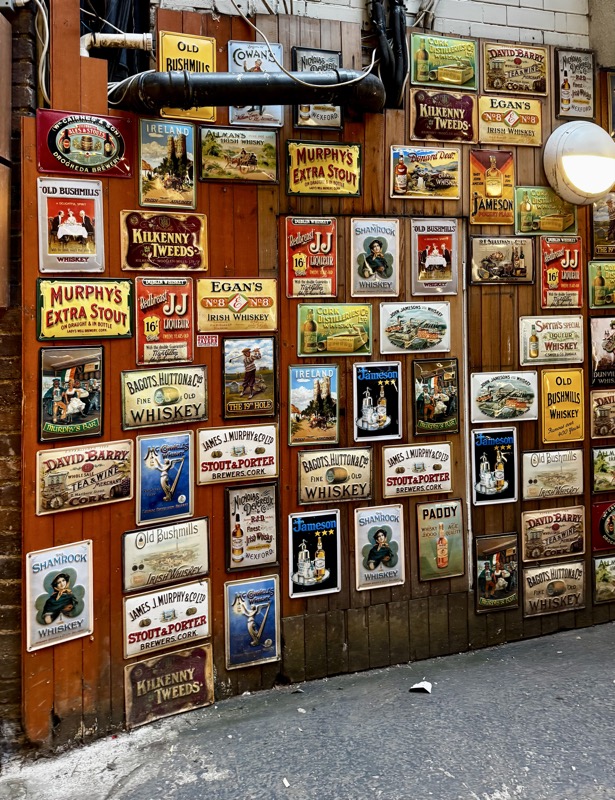
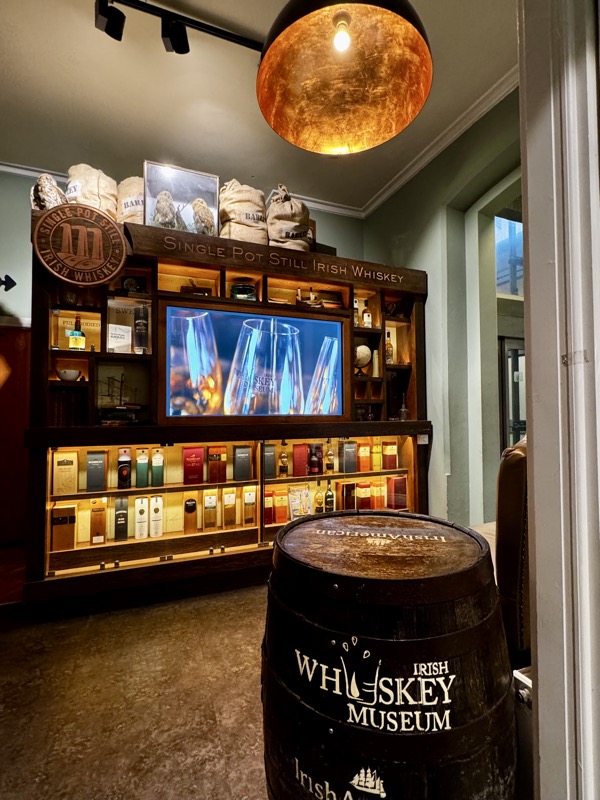
Of course, there was a wee tasting at the end of the tour… and I discovered I don’t like Irish whiskey any more than I like Scotch whisky… so in the debate over whiskey vs whisky, I’m solidly still in camp, ”Gin”!
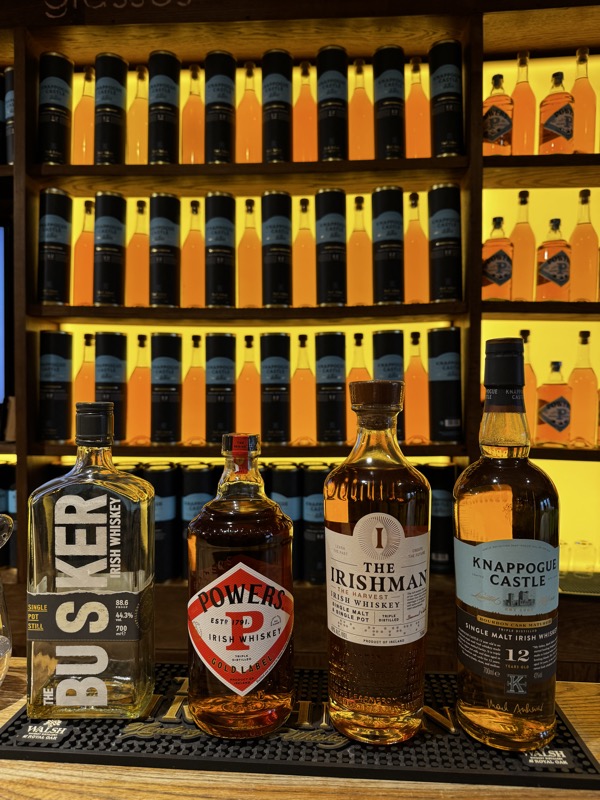
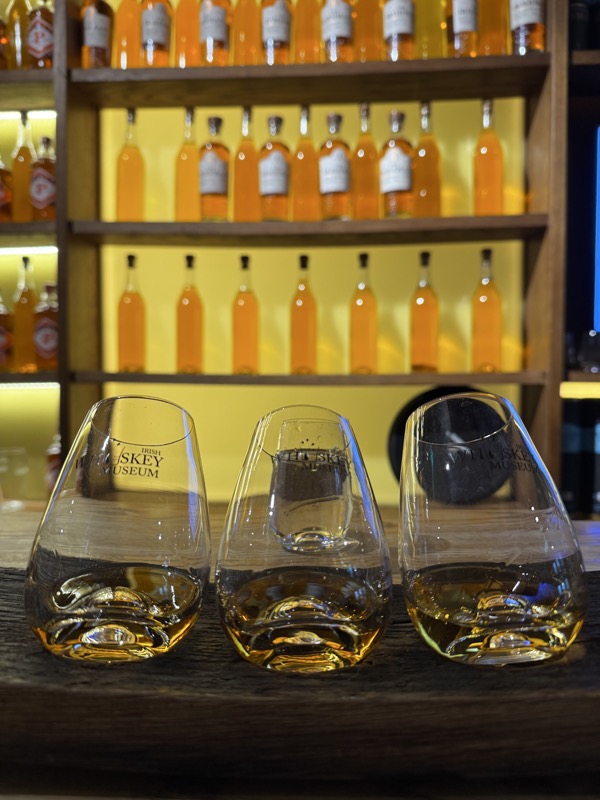
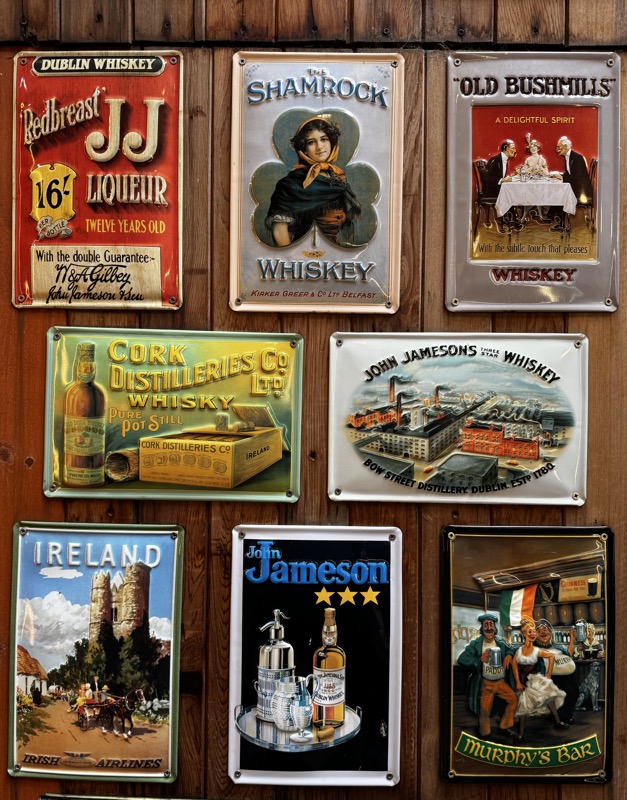
After our visit to the Irish Whiskey Museum, we decided (a fatally poor decision as it turned out) to have lunch at The Old Mill. I wasn’t practically hungry, so went for the light seafood chowder option again – worked so well yesterday to warm the cockles; while Stephola opted for a plate of coddle hoping for something reminiscent of her Scottish grandmother’s cooking.
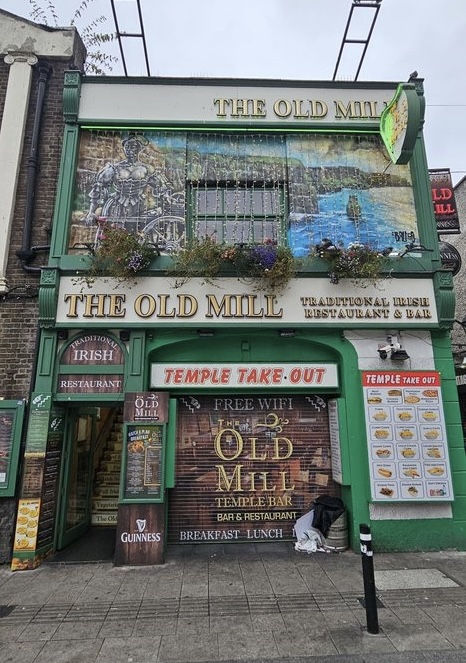
The chowder looked innocuous enough, and was certainly tasty… but, sadly, would have my stomach churning all afternoon, and then eventually hurling my guts up about six hours later! Honestly, I couldn’t remember the last time I threw up like this… it was bad. And when I emailed The Old Mill to let them know that whatever remained of that particular dish should be disposed of – they didn’t give a fuck and didn’t bother to reply. So warning – don’t go there!
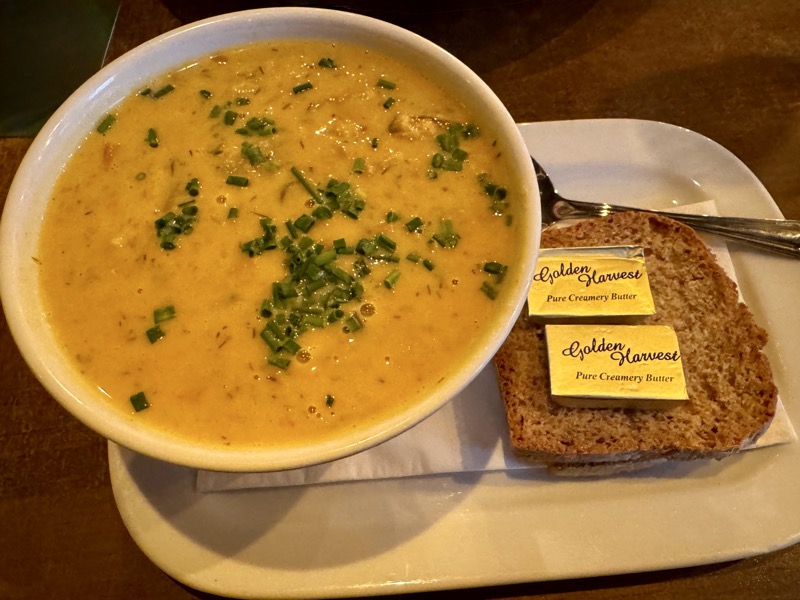
But the afternoon was spent exploring more of the town (before the projectile vomiting, of course – I didn’t know that was going to happen yet!). We went past the Temple Bar again, only to see they had added some massive shamrocks to their lighting design… St Patricks day is just a couple of weeks away, and I imagine Dublin goes off with visitors all in town to celebrate.
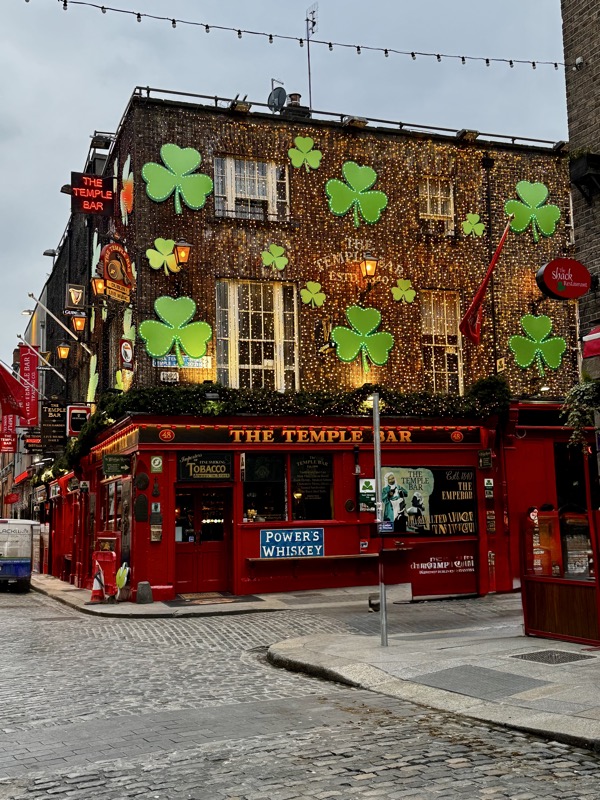
Back cross the Quays again, we popped into the Boar’s Head pub to avoid a group of school children that were just entering the National Leprechaun Museum… yes, that’s correct. They have a National Leprechaun Museum – which is a bit of a misnomer, as there was very little going on here to do with Leprechauns in general. It is actually a folklore and story telling museum, and we were quite interested in the old oral traditions of Ireland.
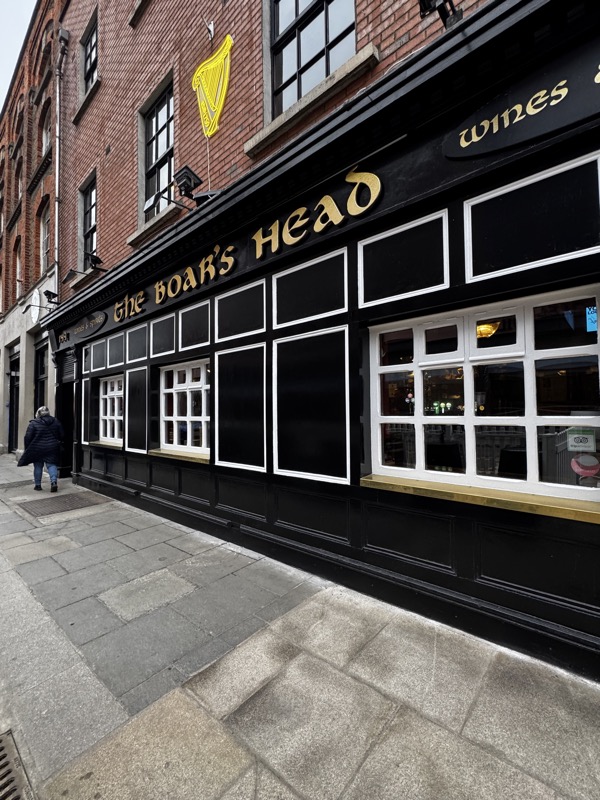
Choosing to stop for a port rather than sharing the spaces with school kids seemed a good way to preserve one’s sanity. 
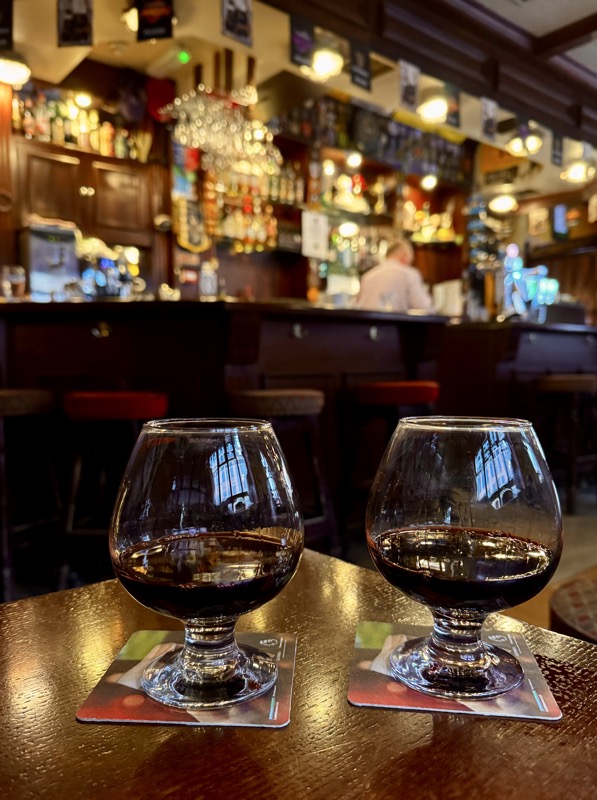
So the National Leprechaun Musuem is privately owned and dedicated to folklore and mythology. They focus on the oral traditions of story telling and claim to be the first (maybe the only?) leprechaun museum in the world! To visit the museum, you get guided through several rooms – and if you are lucky by a very passionate and well spoken student type – and taken on a journey telling you about the history of Irish oral traditions and you get to hear a number of mythological tales retold to you, much in the same way they were shard for hundreds of years before mass media.
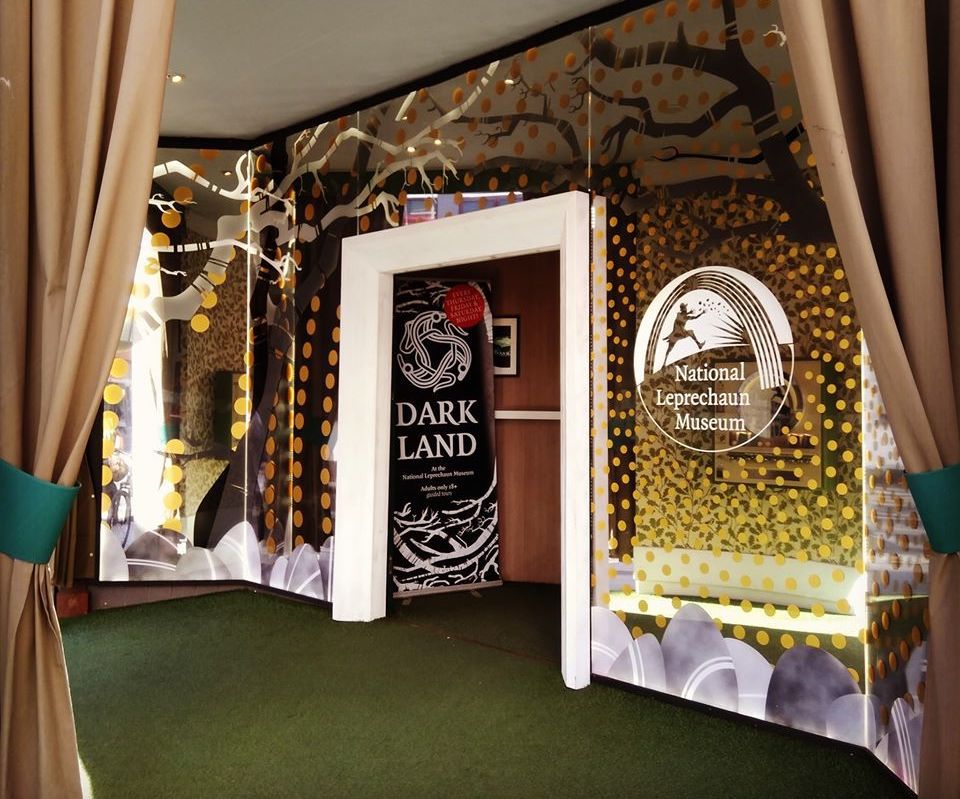
Each room is themed to match the myth or story being shared – and we heard stories of leprechauns, pixies, banshees… it was delightful. If you’ve any interest in history, homeric tradition, poetry, literature, or mythology – it’s well worth a visit, and only an hour or so required.
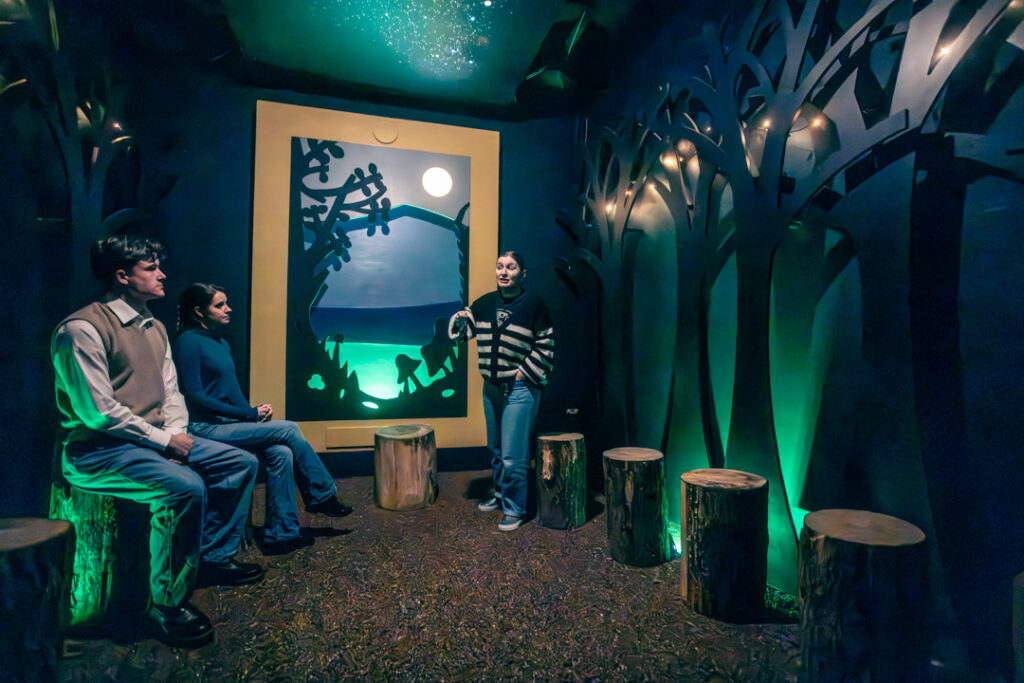
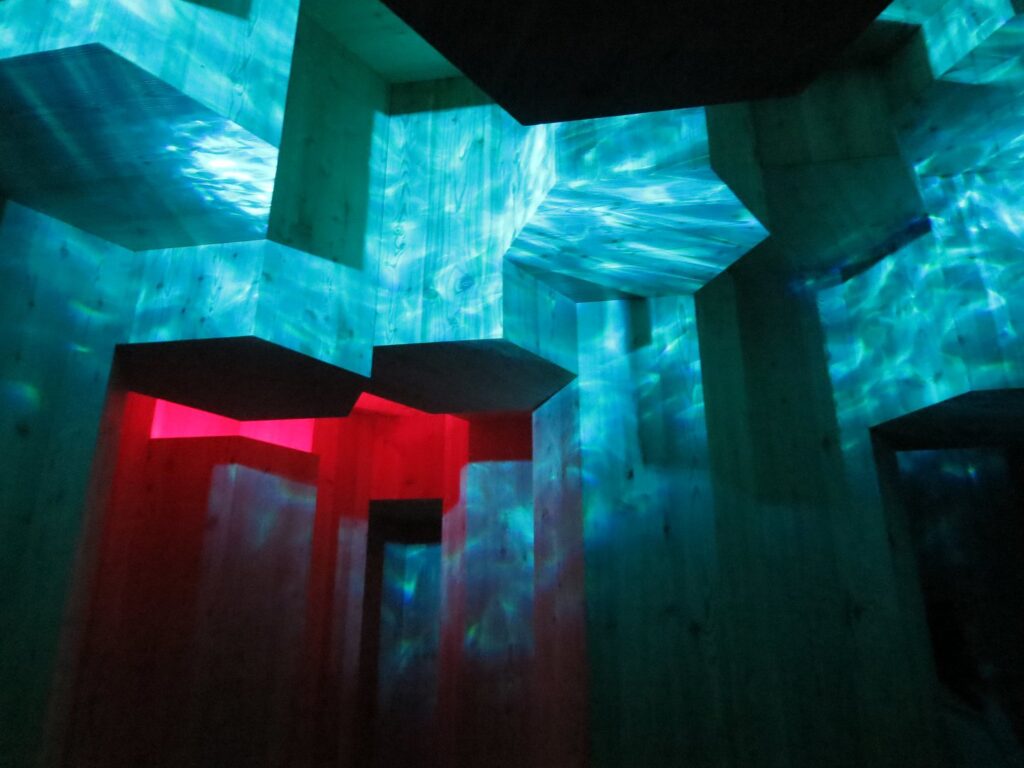
After this it was back to the hotel to rest as my stomach was really pulling off cartwheels by this time. I think this trip to Dublin will forever be associated with food poisoning! I have NEVER been this sick… normally when we’re travelling, I will watch my travel companions drop like flies from flu and stomach bugs, but my OCD-like meticulous hand hygiene has usually held me in good stead from catching most things while away. Anyways, I was laying down and feeling increasingly BLARGH, and though maybe having a shower and taking my drugs to sleep it off was the best approach. So I go to the bathroom and get into the teeny tiny move-and-you’re-brushing-up-against-the-cold-glass shower cubicle, when he heat and steam starts to rise and I think, “I am going to actually be sick!”. I squish myself out of the shower and barely manage to push my clothes and things off the toilet to open the lid – a microsecond poorer timing and I would have chucked uncontrollably all over my clean clothes!
Linda Blair could not have been prouder! Projectile orangey chowder until my eyes watered. It was sooo gross, and three massive spews in total. I could not for the life of me remember the last time I vomited. It was so unpleasant. Le sigh… I eventually finished my shower and then went to bed hoping that tomorrow was way less interesting.
Thankfully I awoke up this morning feeling much improved. The toxins had left the building, and now I felt good as new, even hungry, as I had expelled yesterday’s lunch and been too queasy to have even a sandwich for dinner. After a bit of a slow start, we hunted down a cafe that Stephola’s stepdaughter recommended – First Chapter. It was a fun little cafe with a quirky interior design made to give the illusion of furniture and furnishings being drawn. The menu was a bit simple, but after last night’s stomach upset – simple was fine by me!
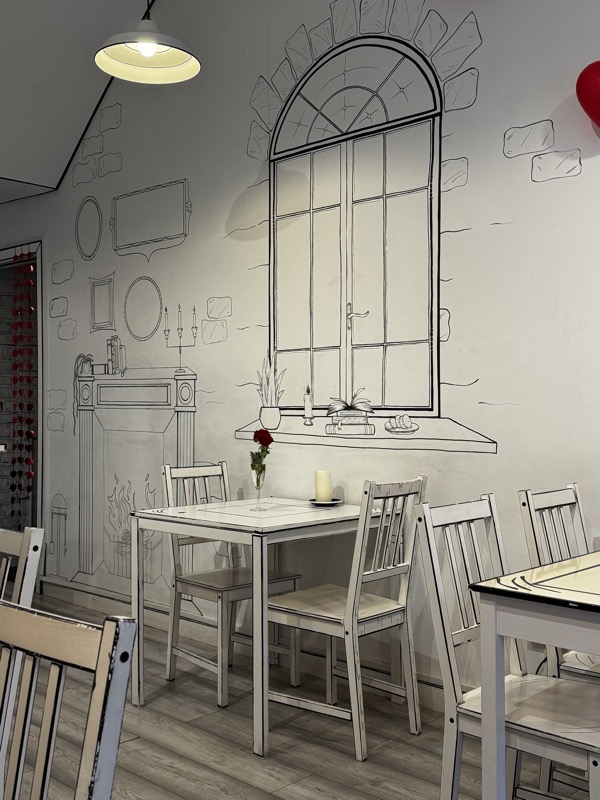
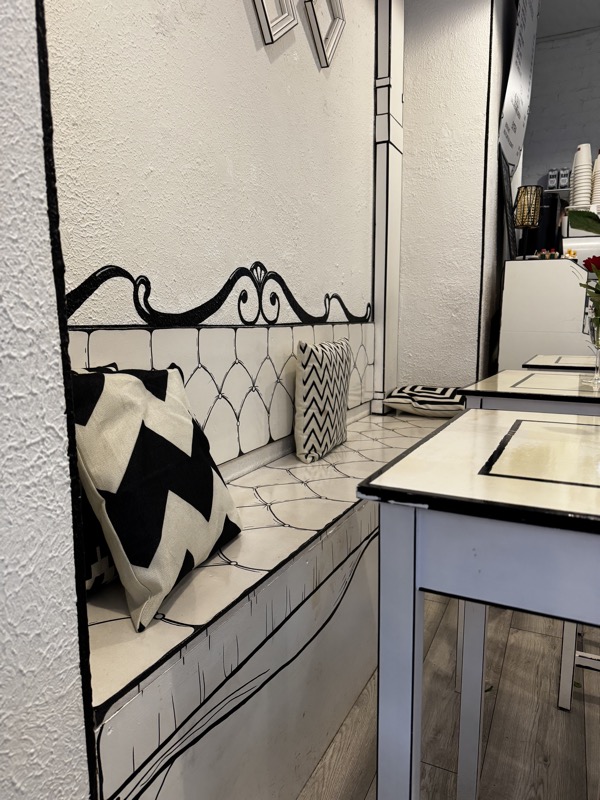
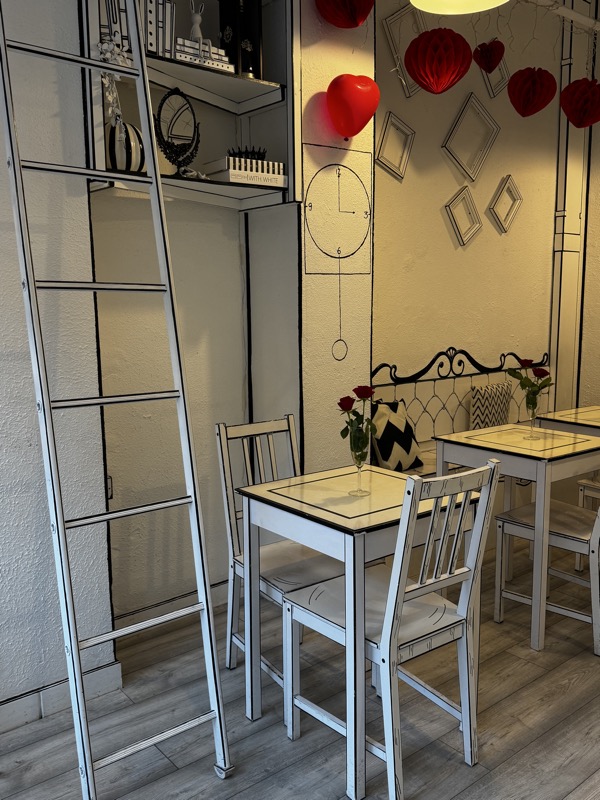
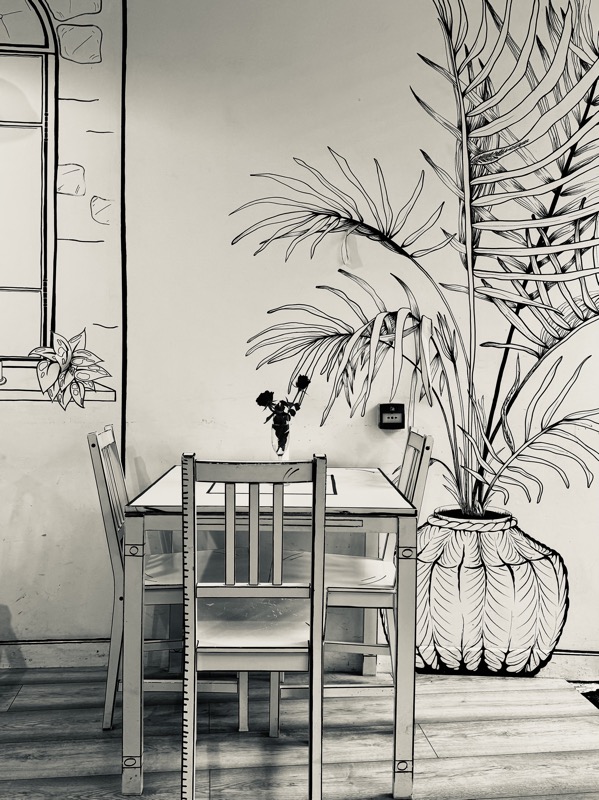
I ordered a up of tea and toastie, and somehow got a full flowery cottage garden with my brunch!
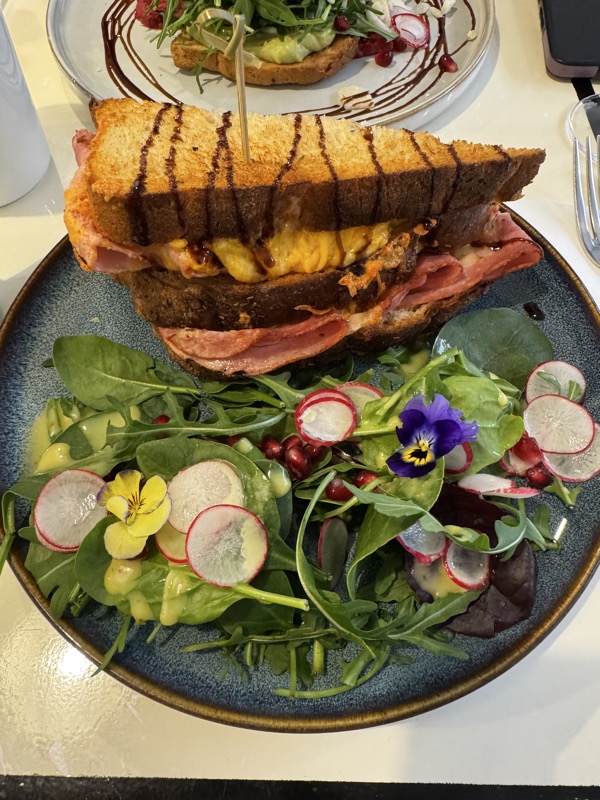
After this we Uber’d (it was pissing down rain) to the Irish National Museum to look for dark ages treasures – which I will put all in a separate post.
After museum’ing for most of the day, we were kinda tuckered out, and decided to head back to the hotel for a quiet afternoon, a dinner at the local in preparation for an early exit out of Dublin to head back to the airport and fly back to Luton.
The shuttle back to the airport the next morning was far more of an adventure than it needed to be – the location we were dropped off, wasn’t the same location that the shuttle picks you up for the return journey… no that might make too much sense. Instead we watched as a shuttle sailed past us and we then spent ten minutes marching up and down the road (which had numerous bus stops and way too much inconsistent signage), until we found the collection point 200m down the road from where you get dropped off. Much logic, Wow. Thankfully, we had allowed ourselves plenty of time to arrive at the airport. So we could board our bright yellow and blue Ryanair bus back to the UK.
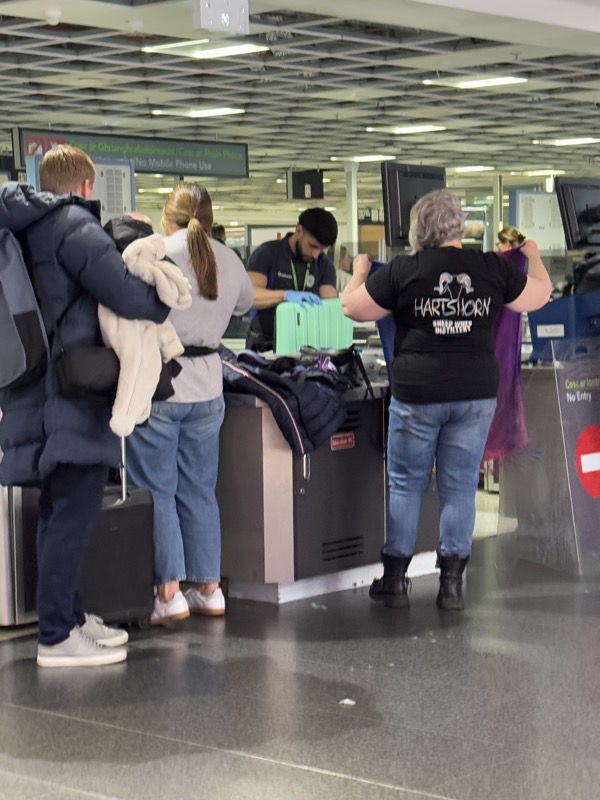
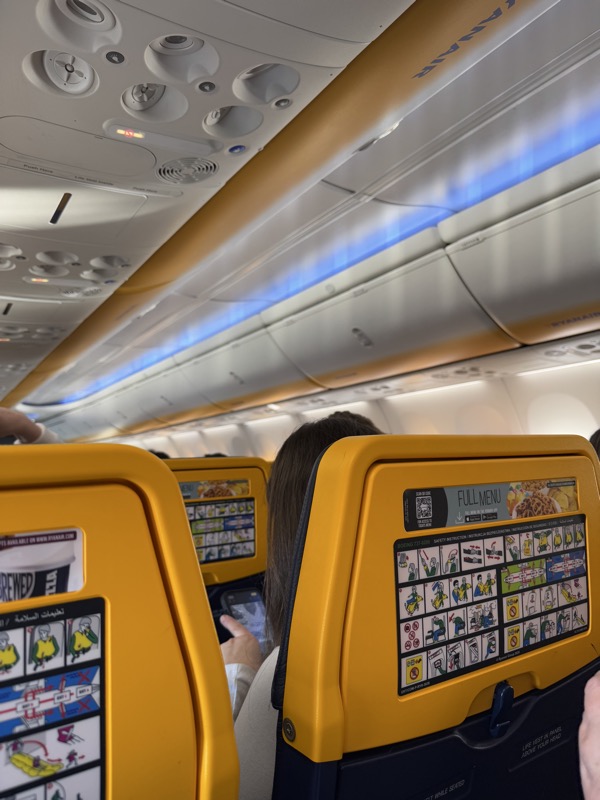
All up – had a fine time, so glad to have seen the Giant’s Causeway after all these years, but I could totally have done without the food poisoning, Dublin!
Made it back and noticed that Bella didn’t seem to even know we had gone!
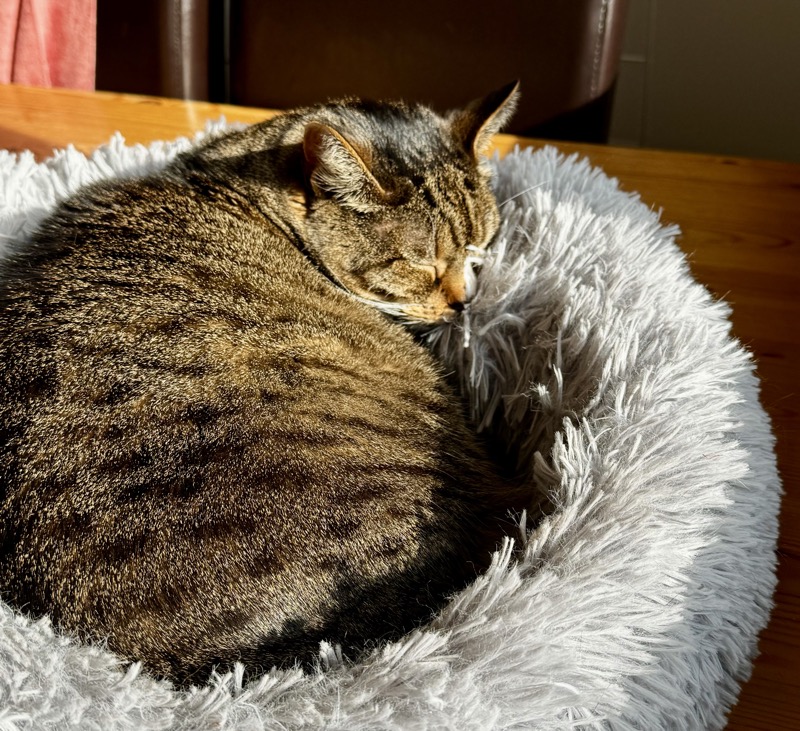



 Vanilla caramel spermatozoons! What’s not to love? They even promise to make you look great on social media!
Vanilla caramel spermatozoons! What’s not to love? They even promise to make you look great on social media! 


 It was super cute and very Japan.
It was super cute and very Japan.
























 and we had to wait another five minutes while he rifled though that backpack which also looked like it was packed by some sort of escaped rabid lab monkey! And I’m sitting there thinking, “Seriously MFers?!”
and we had to wait another five minutes while he rifled though that backpack which also looked like it was packed by some sort of escaped rabid lab monkey! And I’m sitting there thinking, “Seriously MFers?!”  I’m the one with the titanium knee and the only one not causing dramas at security!”
I’m the one with the titanium knee and the only one not causing dramas at security!”
















































 Things have changed.
Things have changed.



































































































































































































































































































